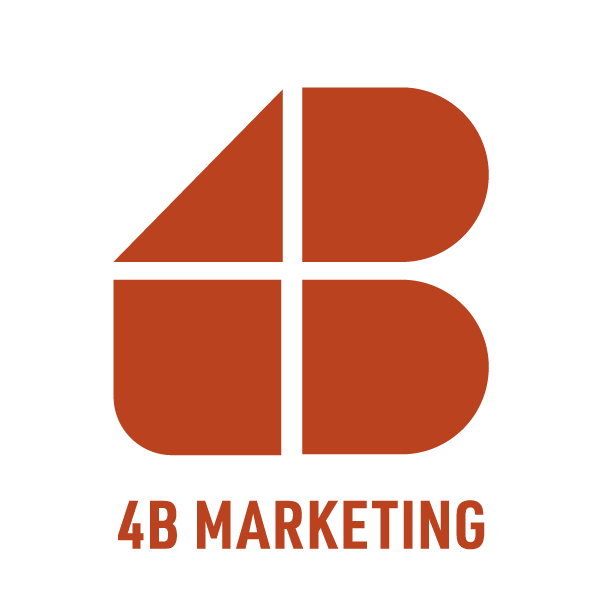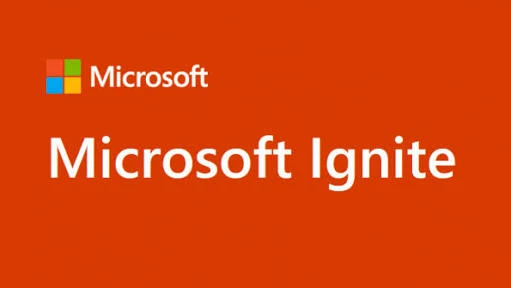Top Tech Channel Marketing Agencies 2025
The Top 13 Channel Partner Marketing Agencies 2025

These agencies develop effective marketing programs that help channel partners reach and engage their target audiences for increased conversions and sales.
Tech Channel Marketing Agencies
- 4B Marketing
- Ironpaper
- A Fluent Vision
- 3 Marketeers
- PureChannels
- bChannels
- The Partner Marketing Group
- Elevation Marketing
- Ansira
- Altitude Marketing
- Tech Target
- Channel Impact
- Marketopia
Channel partner agencies specialize in creating effective marketing programs that enable manufacturers and producers to reach and engage target audiences through external partners, like distributors, resellers, or agents. Channel partner business executives should consider partnering with channel partner agencies to take advantage of targeted marketing campaigns, full-service marketing solutions, and streamlined marketing programs.
4B Marketing’s specialized focus on channel partner marketing allows them to deliver highly targeted and effective marketing solutions that drive results. They understand the unique challenges and opportunities channel partner relationships can present, and they are experts at crafting campaigns that engage a business’s target audience through their partner network.
4B Marketing’s services include:
- Channel Partner Marketing: 4B Marketing works with businesses to develop customized channel partner marketing programs that help them establish strong relationships with their manufacturers and producers, drive revenue growth, and expand their reach.
- Full-Service Digital Marketing: 4B Marketing offers a full range of digital marketing services, including SEO, PPC, social media marketing, and more. They help businesses leverage the power of digital marketing to connect with their target audience and achieve their marketing goals.
- Content Creation: 4B Marketing’s highly skilled team of content creators develops compelling content that resonates with their clients’ target audiences. They help businesses communicate their message effectively and establish a strong brand identity.

4B Marketing takes a collaborative approach to marketing, working closely with businesses to understand their unique needs and objectives, which allows them to create customized solutions that help clients achieve their goals while staying on time and within budget. Their strong communication skills and responsiveness are a hallmark of their service.
Partnering with 4B Marketing can benefit B2B companies in several ways. Here are a few reasons why B2B C-suite executives should consider partnering with 4B Marketing:

- Customized Marketing Solutions: 4B Marketing works closely with their clients to develop customized marketing solutions that meet their unique needs and objectives. They take the time to understand their clients’ businesses and create strategies that help them achieve their goals.
- Proven Track Record: 4B Marketing has a proven track record of helping B2B businesses drive revenue growth and achieve their marketing objectives. Their team of experts has the experience and expertise needed to create effective marketing solutions that deliver results.
- Strong Relationships: 4B Marketing understands the importance of establishing strong relationships with channel partners. They work closely with their clients’ to provide them with the support and resources they need to effectively promote products and services.
4B Marketing has worked with a wide range of clients across various industries, consistently delivering measurable results that drive revenue growth. Their team of experienced professionals possesses a wealth of knowledge in channel partner marketing and other areas of digital marketing, which allows them to provide a comprehensive suite of services to their clients.
-
Ironpaper
Ironpaper is a B2B marketing and growth agency that specializes in building growth engines for marketing and sales success. They power demand generation campaigns, account-based marketing (ABM) programs, create B2B content, strengthen sales enablement, generate qualified leads, and improve B2B marketing efforts. Their full-service approach covers every aspect of B2B marketing and sales, from strategy and creation to execution and measurement.
Many B2B companies struggle to differentiate themselves from their competitors and Ironpaper helps businesses reframe their offering around the buyer’s perspective, articulating a clear value proposition that resonates with ideal buyers. Through their thought leadership, messaging, and strategy development, Ironpaper helps businesses communicate their unique value and stand out in a crowded market.
At Ironpaper, growth efforts require more than just running campaigns, installing technology, and executing tactics without testing and measurement. They believe that data-driven marketing strategies are key to success, and they take a holistic approach to B2B marketing and sales that focuses on generating measurable results.
-
A Fluent Vision LLC
A Fluent Vision (AFV) offers a range of services, including Marketing-as-a-Service, which helps clients execute better marketing and accelerate lead conversion to grow their pipeline. They also offer Partner Engagement to recruit and develop channel partners to achieve key performance objectives, Sales Institute to empower sales organizations to shorten the sales cycle, and Executive Consulting to build, focus, and strengthen sales and marketing infrastructure.
They have more than 75 years of combined industry experience, and their services aim to increase efficiency, enhance demand generation effectiveness, and streamline marketing and sales synergy for their clients. AFV’s marketing managers develop highly targeted campaigns that resonate with the audience, resulting in predictable lead generation.
AFV works to provide a clear view of the partner pipeline and measure ROI on channel programs, helping businesses stay ahead of IT transformation and keep their pipeline growing.
-
3 Marketeers
3 Marketeers is a marketing agency that helps businesses generate marketing qualified leads faster, compress sales cycles, and drive more opportunities to the bottom line. They do this by combining creativity, technology, and data to curate personalized buyer journeys that lead to increased sales.
The success of 3 Marketeers is a result of their commitment to forward momentum and constantly evolving to exceed clients’ marketing goals. They offer a range of services, including data-driven strategies, content development, creative services, events, marketing automation, web development, and paid media.
Their Channel Lead Accelerator program provides businesses with a turnkey solution to seamlessly identify campaign assets, engage partners, and run the campaign while providing robust reporting to track ROI. This program helps businesses set up their partners and themselves for success by focusing on real-time follow-up to marketing qualified leads (MQLs). With their expertise in designing, building, and scaling marketing with channel partners, 3 Marketeers can help businesses achieve their goals.
-
PureChannels
PureChannels specializes in helping businesses grow through their channel partners. They provide a strategic approach to creating high-quality content that captures the unique tone of voice and engages the target audience. PureChannels offers a variety of content types to help businesses stand out and generate more sales, including one-off pieces and entire campaigns.
PureChannels also offers outsourcing solutions for lead and demand generation, providing a steady stream of qualified leads for businesses to follow up on. Their team of channel sales and marketing professionals develops proven tactics and strategies to attract potential partners or customers, preventing revenue loss even when businesses or partners lack the necessary resources to run sales and marketing activities.
Their creative team of channel experts works collaboratively with businesses to provide a comprehensive partner portal and PRM services that empower partners with valuable resources, such as training materials, product information, and marketing collateral. The partner portal is intuitive, user-friendly, and engaging, making it easier for partners to access the resources they need. As a result, businesses enjoy more productive, profitable, and successful relationships with their channel partners, driving engagement and increasing revenue.
-
bChannels
bChannels offers partner marketing as a service, which means they provide a team of leading channel partner marketing experts to help maximize your through-partner marketing efforts. With precision targeting using their Intelligent IndexTM, they can align partners with the digital marketing activities that best match their capabilities, maximizing your return and accelerating revenue growth.
Knowing your competition is key to gaining mindshare among your customers and partners. That’s why bChannels provides a deep understanding of the digital marketing battlegrounds so you can navigate the challenges and build mindshare for your brand.
One of the biggest challenges in marketing is creating effective campaigns that resonate with your target audience. bChannels has solved this by offering packaged marketing campaigns that are fixed price, in-region, and have clear outcomes. Their team of channel partner experts will guide your partners through the campaigns, ensuring they understand and value them.
What sets bChannels apart is their Virtual Partner Marketing Manager, who gives you the best of their 20-plus years’ channel experience. They work directly with you and your partners’ digital marketing activity, planning campaigns, offering advice, and assessing performance to ensure your partners get the best from their marketing relationship with you.
-
The Partner Marketing Group
The Partner Marketing Group is a B2B marketing agency specializing in software and technology channels. Their technology marketing experts help businesses become thought leaders and earn the trust of their prospects, customers, and partners.
Their creative team of storytellers helps businesses produce high-quality content to educate, engage, and inspire their audience. They also create targeted marketing campaigns for any market, purpose, or channel, from strategy to content to execution.
With their senior-level experts, The Partner Marketing Group offers planning and strategy services to assess, strategize, build, guide, and execute marketing plans. They also provide a range of social media solutions to take advantage of powerful B2B marketing platforms such as LinkedIn.
As channel marketing experts, The Partner Marketing Group empowers partners to compete and grow with personalized channel marketing solutions, programs, and training. They also offer The Solutions Connection, a comprehensive and searchable online directory for promoting add-on software solutions for any publisher.
-
Elevation Marketing
Elevation Marketing is a full-funnel marketing agency that provides B2B businesses with data-driven, digital-first solutions that inspire change, motivate action, and deliver predictable outcomes. They offer end-to-end B2B marketing programs, highlighting brand, demand, ABM, channel, and sales enablement.
Developing ecosystems to manage data and marketing programs that consistently deliver measurable results, Elevation seeks to understand each client’s unique business needs and objectives, simplifying the process of building systems and campaigns by first focusing on data. They develop compelling stories and engaging omni channel campaigns that drive customers and prospects towards critical business actions, tying it all together with cutting-edge technology systems and platforms.
Elevation Marketing offers a range of B2B marketing services that reflect the unique needs of each business. From account-based marketing to branding, channel, content, creative, development, digital, ecommerce, events, innovation, lead gen, media, public relations, research, sales enablement, social media, strategy, and video, their full-service approach is focused on delivering customized solutions.
-
Ansira
Ansira provides an end-to-end channel marketing program platform and services that enable marketing activation and funds management for brands with indirect sales partners. The company delivers modernized and efficient programs that help enable partners, providing custom partner program designs, holistic funds management, and asset management capabilities.
With a scalable proprietary platform, Ansira reduces marketing redundancies and wasted spend by integrating API and automation technologies, providing effective marketing claim review processes, and offering lead-to-revenue local website technology platforms and advertising solutions. The platform also offers insights and trends to guide clients’ and partners’ next-best decision-making processes.
Ansira’s platform is rules-based and globally compliant, providing access to assets, campaigns, and funds while ensuring program activity governance, in-market assessments, brand compliance, and customizable marketing assets. The platform also supports a global user experience, with services led by technology-powered support teams serving 190 countries in 13 languages, and partner incentivization, funding, and payment in 130 countries and 40 currencies.
Ansira’s technology suite, the Ansira Edge Technology SuiteSM, acts as a nerve center with modules for compliance, channel engagement, and funds management. The modules can stand alone but are more impactful when combined to meet all local experience needs, empowering partner ecosystems to sell more and meet evolving business needs.
-
Altitude Marketing
Altitude Marketing is a B2B marketing agency that provides integrated, data-driven marketing solutions to help businesses achieve their goals. They specialize in serving clients in the life sciences, technology, manufacturing, and other technical industries.
Unlike other marketing agencies that focus on one specific area, Altitude Marketing offers a full-service approach that includes marketing strategy, branding, content creation, SEO, web development, digital marketing, public relations, social media, graphic design, video, media buying, and process automation. They understand that B2B and technology companies need data-driven marketing strategies that align with their business goals and deliver real results.
Altitude Marketing’s team gets to know each client’s industry and buyers, and translates complex products and services into visibility-raising strategies and frameworks. They work with clients to develop an integrated marketing and advertising mix that gets attention and leads. With a global client base and a focus on results, Altitude Marketing provides B2B marketing services that fit each business’s unique needs.
-
TechTarget
TechTarget is a reliable resource for finding active buyers in your tech market. With access to the largest online enterprise tech communities, they provide accurate and precise data for better business. By using the right behavioral data, you can engage with buyers at every point of their journey with personalized outreach.
Their priority engine tool allows you to engage with real people who are making actual buying decisions. TechTarget covers all the major enterprise tech markets, including AI, BI & Big Data, Business Applications, CIO & IT Strategy, Cloud & DevOps, Data Center & Virtualization, End User Computing, Health IT, Networking, Security, Storage, Channel Resources, and Technology Content Libraries.
They provide a range of services to enhance your marketing efforts, from building awareness through intent-driven advertising to generating better leads with AI-optimized lead generation. TechTarget also helps with in-person and virtual event attendance, converting website visitors, and enabling sales and channel partners with personalized pitches and real insights.
-
Channel Impact
Channel Impact leads in partner marketing and enablement, helping companies expand their reach and revenue with high-impact content and services.
What sets Channel Impact apart is their ability to manage every aspect of partner content creation and drive partner campaign utilization with Virtual Partner Marketing services. Unlike agencies that only provide creative services, Channel Impact works with clients to develop messaging, create copy, and ensure that the finished product is highly impactful.
With their full-service solutions, Channel Impact takes care of the heavy lifting, so clients don’t have to. Their range of services includes partner strategy and programs, staffing solutions, partner marketing and enablement, partner events, partner analytics, and partner success practice. By building, executing, and measuring channel offerings, Channel Impact ensures their clients get the results they need to succeed.
Channel Impact’s portfolio includes a wide range of successful projects such as Virtual Partner Marketing Managers, Customer Success Manager Playbook, Global Partner Program Refresh, Partner Program Digital Guide, Partner Success Story Program, and Sales Kick-Off Content. With Channel Impact, businesses can leverage their expertise to drive engagement, boost revenue growth, and expand their reach in the market.
-
Marketopia
Marketopia helps MSPs, VARs, and tech vendors accelerate growth through marketing, lead generation, and sales enablement. They execute demand generation campaigns, create B2B content, and set qualified sales appointments to keep pipelines active. Their digital marketing services — including SEO, PPC, social media, and website development — are designed to drive visibility and conversions.
In addition to marketing, Marketopia develops and manages channel partner programs. They streamline onboarding processes, design incentive plans, and create enablement tools that strengthen partner engagement. Their strategies are practical, results-focused, and built to scale. Marketopia emphasizes clear messaging, helping tech businesses communicate their value to partners and prospects.
With their deep understanding of the tech channel and hands-on approach, Marketopia doesn’t rely on generic solutions. Instead, they analyze each client’s challenges, execute targeted campaigns, and continually refine data-based strategies. The goal is to leave clients with more qualified leads, stronger partner networks, and measurable business growth.
Channel Partner Marketing Basics
What Is B2B Channel Partner Marketing?
B2B channel partner marketing is a powerful approach manufacturers and producers often use to reach and engage their target audiences through external partners, like distributors, resellers, or agents. By leveraging the expertise and resources of their partners, manufacturers and producers can expand their reach and drive revenue growth.
Partnering with a top channel marketing agency enables partners to sell more efficiently and achieve their marketing and sales objectives. Here are some key benefits of working with a partner marketing agency:
- Targeted Marketing Campaigns: Partner marketing agencies specialize in creating targeted marketing campaigns that resonate with your target audience, resulting in increased conversions and sales.
- Full-Service Marketing Solutions: Full-service marketing agencies offer a range of marketing solutions, including digital marketing services, content creation, and conversion rate optimization (CRO). An award-winning agency can deliver a full suite of marketing services, including social media marketing, content marketing, and marketing automation, to help businesses grow their audience and drive conversions.
- Streamlined Marketing Programs: Partner marketing agencies provide marketing automation solutions that allow businesses to streamline their marketing efforts and optimize their marketing programs. This helps businesses save time and money and achieve better results.

Partnering with a full-service digital marketing agency that specializes in partner marketing can help businesses create effective marketing programs, increase their conversion rates, and achieve their marketing objectives.
What is a Channel Partner?
A channel partner is a company or individual who sells a manufacturer’s or producer’s products or services to end customers. These partners can include distributors, resellers, value-added resellers (VARs), system integrators, agents, and other intermediaries.
When it comes to B2B marketing, channel partners are a critical component in expanding a manufacturer’s or producer’s reach and driving revenue growth. By tapping into their expertise and resources, they can establish a broader presence in the market and reach new customers they may not have been able to reach on their own.
A top channel partner marketing agency can help you maximize your partnership potential and achieve your marketing goals.
What Are Channel Partners in Marketing?
Channel partners in marketing are external companies or individuals that collaborate with your business to promote and sell a manufacturer or producer’s products or services to end customers.
Partnering with a top channel partner marketing agency can help you maximize the potential of your relationships with manufacturers and producers and achieve your marketing goals. These agencies specialize in creating programs that enable partners to work effectively with manufacturers and producers, establish strong relationships, and achieve their marketing and sales objectives.
Take your channel marketing efforts to the next level with 4B Marketing. Get in touch with our team today and experience the benefits of a growth-oriented mindset and a results-driven approach to partner marketing.
Must Attend Tech Events in 2025
Mark your calendars, pack your bags, and get ready to engage with the brightest minds and paradigm-breaking technologies shaping the future.
The tech industry moves fast, and staying ahead means being where the action is. From AI breakthroughs to cybersecurity advancements and cloud innovations, these top 2025 tech events are the perfect opportunity to learn, connect, and grow.
Top Tech Conferences to Attend in 2025
- March 24–27, 2025
- The Venetian, Las Vegas
- Register Here
Harness the channel’s momentum at the largest channel event of the year. Explore AI, cybersecurity, and next-gen tech shaping the future. With 300-plus ICT vendors, premium keynotes, and memorable networking events like the Roaring ’20s Party and Expo Hall Pub Crawl, this is a must-attend for partners and MSPs.
Pricing: Early Bird rates start at $299 (Partner) or $649 (Supplier). Full access packages available.
- March 31–April 4, 2025
- Venetian Expo, Las Vegas
- Registration Inquiry Here
As the leading security trade event in the U.S., ISC West connects thousands of security professionals with the latest in access control, video surveillance, cybersecurity, drones, robotics, and more. New for 2025: a 4-day SIA Education@ISC Passport Program covering industry trends before the Exhibit Hall opens.
Pricing: Registration and pricing details coming soon. Stay ahead by sending a registration inquiry now!
- June 9–12, 2025
- Caesars Forum, Las Vegas
- Register Here
As the world’s largest customer contact event, CCW 2025 empowers customer service professionals with best practices, emerging technologies, and leadership strategies. Explore digital transformation, generative AI, and remote work trends through keynotes, workshops, and interactive sessions.
- Early Bird (End Users): Starting at $1,699 through February 28, 2025.
- Buy 1 Get 2 Deal (End Users): $999.67 per pass when purchased in bundles of three by January 31, 2025.
- Vendors: Passes from $5,499.
- October 14–16, 2025
- San Francisco, CA
- Save the Date & Join the List
Dreamforce is the largest AI event in the world, blending innovation, learning, and inspiration. Explore the latest in AI, customer success, and digital transformation while connecting with industry leaders. Join keynotes, breakout sessions, and networking events that redefine what’s possible in business.
Pricing: Join the list now to secure the lowest rate when registration opens and gain early access to hotel bookings.
- March 17–20, 2025
- San Jose, CA
- Register Here
GTC 2025 brings together thousands of developers, innovators, and business leaders to explore how AI and accelerated computing are solving complex challenges. Don’t miss NVIDIA CEO Jensen Huang’s keynote, 500-plus sessions, 300-plus exhibits, hands-on training, and networking events.
- Conference Pass (4 Days): Early Bird $1,975 (Regular $2,295) – Ends February 3.
- Exhibits Only Pass: Early Bird $745 (Regular $845).
- Full-Day Workshop: Starting at $495.
- April 28–May 1, 2025
- Moscone Center, San Francisco
- Register Here
Step into the heart of the cybersecurity community at RSAC 2025. Unite with innovators, thinkers, and achievers to foresee risks, counter threats, and shape the future of security. Explore keynotes, track sessions, interactive workshops, and the Innovation Sandbox contest.
- Full Conference Pass: $2,195 (Oct 21 – Jan 10, 2025).
- Expo Plus Pass: $395 (Oct 21 – Jan 10, 2025).
- Expo Pass: Pricing available mid-January 2025.
- August 2–7, 2025
- Mandalay Bay Convention Center, Las Vegas
- Register & Request Hotel Info
Black Hat USA is the premier cybersecurity event where technical professionals explore cutting-edge security research, trends, and developments. From in-depth briefings to hands-on training, this multi-day event connects the security community with the insights they need to stay ahead of threats.
Pricing: Pricing details to be announced.
- March 17–20, 2025
- Gaylord Palms, Orlando, FL
- Register Here
As North America’s top conference for communications, collaboration, and CX, Enterprise Connect equips IT professionals with strategies to tackle today’s biggest challenges. Gain insights from expert keynotes, build invaluable connections, and explore business opportunities.
- Premium Conference Pass: Starting at $2,249 (Early Bird, ends Feb 21).
- Standard Conference Pass: Starting at $2,449.
- Half-Day Training Add-On: From $649.
- Expo Plus Pass: Free for qualified end-users.
- December 1–5, 2025
- Las Vegas, NV
- Subscribe for Updates
AWS re:Invent is the premier learning event for the global cloud computing community. Get a front-row seat to hear real stories from AWS leaders and top customers on pressing topics like generative AI. The event features over 2,000 technical sessions, hands-on training, and certification opportunities. Explore new product launches, demos, and behind-the-scenes insights during headline-making keynotes from leaders, cloud professionals, builders, and tech enthusiasts.
Pricing: Details to be announced. Stay updated by subscribing now.
- Week of November 17, 2025
- San Francisco, CA
- Sign Up for Updates
Microsoft Ignite is the go-to conference for developers, IT professionals, and partners looking to dive deep into Microsoft technologies. Featuring presentations, whiteboard sessions, hands-on labs, and an extensive content catalog. Connect with Microsoft experts, MVPs, and peers through networking events, community meetups, and “Ask the Expert” sessions. Explore the exhibition area to discover the latest technologies and solutions.
Pricing: Sign up to be notified when registration details are released.
- April 9–11, 2025
- Mandalay Bay Convention Center, Las Vegas
- Register Here
Experience Google’s latest AI innovations, product launches, and hands-on sessions at Google Cloud Next. Connect with industry leaders, explore developer demos, attend workshops, and learn how to drive efficiency and growth with advanced technology.
(Follow the link for full pricing details):
- Full Conference Pass: Early Bird $999 (Dec 5 – Feb 14).
- Partner Summit + Full Conference: Early Bird $999.
- Government Rate: $899.
- Education Rate: Starting at $299.
- Group Tickets (10+): Early Bird $599 per ticket.
- June 8–12, 2025
- San Diego Convention Center, San Diego, CA
- Register Here
For over 35 years, Cisco Live has been the go-to event for IT professionals to learn, connect, and explore the future of technology. Attend sessions on AI, security, networking, and more. Meet Cisco experts, validate your skills with a free certification exam, and enjoy networking opportunities, receptions, and the Cisco Live Celebration.
- Full Conference: From $2,795 (Advance), $2,995 (Standard), $3,195 (Late).
- IT Leadership: From $3,195 (Advance), $3,395 (Standard), $3,595 (Late).
- Explorer Pass: From $795 (Advance), $895 (Standard), $995 (Late).
Ready to Conquer 2025?
Take your pick, sign up early, and fuel your professional growth in 2025. The future won’t wait — and neither should you.
The Power of Personalization: Tailoring Tech Solutions to Individual Client Needs
Learn why understanding and addressing specific industry challenges leads to more effective and competitive technology services.
Key Takeaways:
- The allure of “universal” solutions in tech mirrors the convenience we seek in everyday innovations, but applying a one-size-fits-all strategy in tech services overlooks the unique complexities of different industries.
- Truly understanding customers goes beyond demographics to deep dives into the specific challenges, regulatory environments, and competitive landscapes of their industries, enabling tech companies to develop more tailored and resonant solutions.
- The creation and refinement of detailed client personas, through methods like surveys, business intelligence tools, analyzing company data, and engaging with customer-facing employees, are critical steps in customizing tech solutions effectively.
- Effective communication of customized solutions involves clear website language, well-trained salespeople, and marketing campaigns that leverage client personas to highlight tailored solutions.
- Prioritizing and addressing the unique needs of each client with personalized solutions sets tech companies apart in a crowded market, transforming the provider-client relationship into a strategic competitive advantage.
The concept of “universal” is often too enticing to deny. Everyone wanted a universal remote control back in the day. Universal Serial Bus (USB) has come to define cables, connectors, and communication protocols. Universal healthcare… Well, we won’t get into that here.
But when it comes to tech solutions, seeking efficiency through universality is a misguided quest. Employing a one-size-fits-all strategy neglects the diverse and specific needs inherent across disparate industries. In a fiercely competitive market, the ability to customize technology solutions to meet the exact challenges and demands of individual clients sets the innovators apart from the rest, creating a niche where solutions meet exacting demands.
The penchant for broad, generalized strategies overlooks the subtle differences between each sector’s demands, resulting in a performance gap. As tech companies pivot toward the future, success increasingly depends on embracing specificity over generality, crafting solutions that are as unique as the clients they serve.
Beyond Surface-Level: Do Tech Companies Know Who Their Customers Are?
Having a shallow grasp of who your customers are represents a strategic blindspot with far-reaching implications. It’s not just about recognizing the customers, but deeply understanding the nuances of their industries—a demand that extends beyond the surface to the very core of their challenges and opportunities.
Knowing your customer in today’s tech landscape means going beyond demographics and superficial needs assessments. It requires a deep dive into their industry’s ecosystem, understanding the specific pain points, regulatory environments, competitive dynamics, and any unspoken needs.
Here lies the real value for tech companies—the ability to tailor your approach to industries and individual narratives within them. This means gaining qualitative insight, turning information into understanding, and transforming empathy into action. The companies that stand out are those who listen intently, not just to respond, but to understand and innovate based on that deep comprehension.
Tech providers must engage with clients beyond the transactional and foster a culture of curiosity about the industries they serve. It’s about crafting solutions that resonate on a fundamental level, providing not just what the market thinks it wants, but what it truly needs.
This call for a deeper understanding is not merely a strategy, but a value proposition of the future—solutions born not out of assumption, but out of insight.
Recognizing Industry-Specific Needs
The divergent needs of industries such as healthcare and energy exemplify why a universal strategy cannot and should not be the norm.
Healthcare, with its stringent regulatory requirements, privacy concerns, and the critical nature of patient data, demands solutions that prioritize security and compliance above all. On the other hand, the energy sector, grappling with operational efficiency, sustainability, and resource management, requires a technological focus that can accommodate large-scale infrastructure and intricate supply chains.
But it’s not enough to superficially understand the client’s business or to retrofit generic solutions in the hope they will suffice.
Tech companies must invest time and resources in gaining a comprehensive grasp of the operational, regulatory, and competitive landscapes that define each sector. This happens with market research, but also by engaging with clients, stakeholders, and experts to unearth the subtleties that influence decision-making and technological adoption within these fields.
Armed with this deep industry knowledge, tech companies are better positioned to innovate in ways that are both meaningful and impactful. For healthcare, this might mean developing secure, compliant data management platforms that facilitate patient care without compromising privacy. For the energy sector, it might mean creating robust, scalable solutions for monitoring and managing renewable energy sources, addressing both operational efficiency and environmental sustainability.
Building a Persona: A Foundation for Tailored Tech
Customizing tech solutions begins with a profound understanding of your client base, achieved through the development of detailed client personas. When meticulously crafted, these personas serve as a compass to guide the creation of solutions that resonate deeply with the target audience. Here’s how to build them effectively:
- Conduct Surveys: Direct feedback is invaluable. Surveys allow you to gather quantitative and qualitative data directly from your clients, providing insights into their preferences, challenges, and expectations.
- Utilize Business Intelligence Tools: These tools can analyze market trends, client interaction data, and social media sentiment to offer a broader understanding of client needs and behaviors.
- Analyze Company Data: Dive into your own sales and service data to identify trends and patterns. What do clients in different verticals consistently prioritize or complain about? This internal data is a springboard for persona development.
- Engage with Customer-Facing Employees: Frontline employees who interact with clients daily possess unique insights into customer needs and experiences. Their qualitative feedback can add depth to the personas you build.
Offering a Persona Template
To document these insights effectively, a persona template is an indispensable tool. Here’s a basic structure to get started:
- Persona Name: Give your persona a name to humanize and ease reference.
- Industry/Vertical: Specify the industry to anchor the persona in a specific context.
- Job Role/Title: Understanding their position can highlight specific pain points and needs.
- Demographics: Include age, education, and any relevant demographic data.
- Goals and Challenges: What are they trying to achieve, and what obstacles stand in their way?
- Preferences and Priorities: Detail what they value in solutions and service.
- Behavioral Traits: How do they make decisions? What influences their choices?
- Feedback Insights: Incorporate direct quotes or summaries from surveys and interviews to add authenticity.
This client-centered approach elevates the quality of the solution offered and strengthens the relationship between provider and client, setting the stage for sustained engagement and growth.
Understanding the Individual Behind the Persona
A key step in tailoring tech solutions is to humanize the client personas. Envisioning a specific individual within a vertical adds a layer of realism and precision to your approach, allowing for solutions that are deeply resonant. This practice underscores the importance of moving beyond generic profiles to embrace the needs, aspirations, and challenges of real people behind the business roles.
Articulating Your Customized Solutions
Effectively communicating your tailored solutions is as crucial as the customization itself. Here’s how to ensure your message hits the mark:
Website Language
Ensure your website speaks directly to the needs of each industry you serve. Use language that reflects the specific challenges and solutions relevant to each persona. Highlighting industry-specific solutions on your website demonstrates your expertise and helps clients quickly see the value you offer.
Training Salespeople
Your sales team should be well-versed in the features of your product, but also in the narrative behind each customization. Training them on client personas, the unique value of your offerings, and their underlying rationale empowers them to communicate more effectively with potential clients, building trust and demonstrating empathy.
Designing Marketing Campaigns
Craft your marketing campaigns to attract attention and connect your target personas. Use the insights gained from your persona research to create content that speaks directly to their needs and showcases how your solutions address those needs specifically. Leveraging personas in marketing increases the likelihood of converting leads into loyal clients.
The Strategic Power of Client-Centric Customization
Consumers are bombarded with generic offerings. As such, the true differentiator for tech companies lies in personalized solutions. Understanding and prioritizing the client’s unique needs is not just a service strategy; it’s a competitive advantage that can set a company apart in a saturated market.

Standing Out in the Crowd
The key to distinction in a crowded marketplace is personalization. By tailoring solutions to meet the specific needs of each client, tech companies can create a unique value proposition that resonates on a personal level. This goes beyond merely customizing products to crafting an experience that speaks directly to the client’s situation, challenges, and goals. Personalization, when executed effectively, transforms a service provider into an indispensable partner, thereby fostering loyalty and long-term relationships.
Crafting a Unique Client Journey
Personalization enables tech companies to craft journeys for their clients that are as unique as their business models. This bespoke approach enhances client satisfaction and drives deeper engagement by demonstrating a commitment to the client’s success. It’s about showing clients that their specific needs and challenges are understood and that the solutions provided are designed with their unique context in mind.
Leveraging Data for Deeper Insights
The foundation of effective personalization lies in data. By leveraging insights gathered from client interactions, market research, and feedback mechanisms, tech companies can gain a nuanced understanding of their clients’ needs. This data-driven approach allows for the continuous refinement of solutions and services so that they remain relevant and impactful over time.
Embracing Distinction through Personalization
The tech world’s pursuit of one-size-fits-all solutions mirrors a similar desire for streamlined efficiency. Yet, as we’ve seen, the complexities and unique demands of different industries defy such simplification. The true efficiency, it turns out, lies not in the broad brush of generality but in the precision of specificity. By eschewing the blanket for the bespoke, this tailored approach anticipates demands, creating a synergy between provider and client that elevates both.
Connect with 4B Marketing and we’ll help you refine your approach by personalizing solutions for distinct, industry-specific client needs.
Beyond the Buzzword: How Agility in Tech Marketing Translates to Real Results
Unlocking success in tech marketing requires building a data-centric culture, integrating daily data analysis, and leveraging data for strategic, timely actions.
Key Takeaways:
- Tech marketing demands the strategic application of agility, grounded not in trend-chasing but in the solid bedrock of data-driven decision-making.
- The shift to a data-driven paradigm involves embedding data analysis into daily marketing operations. Setting clear, measurable goals aligned with key performance indicators, routinely incorporating data reviews into meetings, and leveraging dashboards for real-time insights are fundamental steps in this integration.
- From understanding user behavior to optimizing the customer journey, the focus should always be on extracting actionable insights that drive strategic innovation and personalized marketing efforts.
- Identifying the precise moment to act is what distinguishes truly agile marketers. By employing real-time data monitoring, setting actionable thresholds, and embracing predictive analytics, marketers can navigate the complexities of the market with informed confidence.
The hype cycle is an all-too-real phenomenon. Whenever a new buzzword or technological fad gains traction, there is an inevitable period of time where you can’t even hear yourself think over the noise.
This psychological concept, known as “shiny object syndrome,” is something we witness time and time again across pop culture, tech verticals, and nearly every other facet of modern life. Take artificial intelligence (AI), for example. These days, you can’t skim a tech article without being bombarded by forecasts claiming an “AI-driven future is all but at hand.” It’s enough to make you think the rise of the machines is inevitable.
And while that may or may not be true(!), there’s one buzzword that’s grounded in real strategy: agility. More specifically, agility in marketing as a data-driven play. True agility demands timely action, informed by the deep analysis of analytics data. But how does one discern the precise moment to act?
We will delve into the crucial role of data in navigating the hype cycle, emphasizing the need for tech marketers to move beyond intuition and embrace the insights hiding in plain sight within their analytics. From uncovering how to access this goldmine of information to transforming your organization into a truly data-driven entity, we’ll guide you through the practical steps necessary to leverage agility in its most authentic form.
Join us as we cut through the noise, finding clarity in data to drive strategic decisions in the ever-evolving landscape of technology marketing.
Transforming Into a Data-Driven Marketing Organization
Before we lay out all the tools and practicalities of data-driven tech marketing, let’s talk about culture. It is an absolute must to foster an environment where data informs every decision, big or small. This necessitates a deliberate strategy to embed data analysis into the fabric of your marketing operations and decision-making processes.
And that’s only possible when you cultivate a data-driven culture and integrate data analysis into your daily activities.
Cultivating a Data-Driven Culture
- Leadership Buy-In: Change starts at the top. Leadership’s active support is vital for allocating resources and setting a tone that values data across the organization.
- Data Literacy Training: Equip your team with the knowledge and skills to interpret and utilize data effectively. Offer training sessions on analytics tools, data interpretation techniques, and how to apply insights to marketing strategies.
- Democratize Data Access: Break down silos! All team members must have access to relevant data. This empowers everyone to make informed decisions and inspires a sense of ownership over the data-driven outcomes.
- Establish Data Governance: Implement policies and standards for data management, quality, and security. Clear guidelines see that the data used across the organization is accurate, consistent, and reliable.
- Celebrate Data Wins: Highlight and celebrate decisions and strategies that were successful because of data-driven insights. This reinforces the value of data and encourages its continued use.
Integrating Data Analysis into Daily Activities
- Set Data-Driven Goals: Align your marketing goals with key performance indicators (KPIs) that are measurable and data-centric.
- Incorporate Data Reviews into Routine Meetings: Discuss performance metrics, insights gleaned, and adjustments needed.
- Use Dashboards and Reports: This allows team members to quickly assess performance and make timely decisions based on the latest information.
- Encourage Experimentation and Learning: Use A/B testing and other analytical methods to try new approaches, learn from the outcomes, and refine strategies.
- Feedback Loops for Continuous Improvement: Establish feedback loops where data insights lead to actions and where the outcomes of those actions inform future strategies.
Transforming into a data-driven marketing organization involves changing mindsets, processes, and operations. Take deliberate steps to cultivate a culture that prioritizes data and integrates data analysis into daily activities. This paves the way for more informed decisions, enhanced marketing strategies, and ultimately, improved business outcomes.
Understanding the Power of Your Data
In technology marketing, successful campaigns are built on a solid foundation of data. Yet, understanding the power of your data goes far beyond collecting numbers and metrics— it’s about interpreting this information to make informed, strategic decisions that drive real results.
Types of Data Generated by Campaigns Websites
Campaigns and websites are treasure troves of data. Each interaction and engagement provides insights into customer behavior, preferences, and trends. Here are some key types of data these sources generate:
- User Behavior Data: Includes page views, time spent on site, and navigation paths. This data offers a window into what interests your audience and how they interact with your content.
- Conversion Data: Tracks actions completed, such as form submissions, product purchases, or sign-ups, providing a direct measure of campaign effectiveness.
- Demographic and Psychographic : Offers insights into the characteristics and interests of your audience, helping tailor content and offers to match their preferences.
- Engagement Metrics: From social media likes and shares to comments and email open rates, these metrics gauge the level of interaction with your brand.

The Importance of Actively Using Data
Of course, true power lies in data application. Active use of data involves continuous analysis, interpretation, and implementation of insights to inform decision-making processes. Here’s why it’s crucial:
- Strategic Decision Making: Data-driven insights help identify what’s working and what’s not, allowing for more strategic decisions regarding campaign adjustments and resource allocation.
- Personalization and Targeting: Understanding your audience’s behavior and preferences enables you to create more personalized, targeted marketing efforts, significantly enhancing engagement and conversion rates.
- Predictive Analysis : Analyzing trends and patterns in your data can predict future behaviors and preferences, giving you a competitive edge by allowing you to anticipate market shifts and customer needs.
- Optimizing User Experience: Data on user behavior and site engagement informs improvements in website design and functionality for a seamless, user-friendly experience that encourages retention and conversion.
There’s something transformative about turning raw numbers into actionable insights—it can, and will, significantly impact your marketing strategies’ effectiveness. Embracing this approach requires not just the right tools and technologies, but a mindset shift within the organization to value and leverage data at every opportunity.
Finding the Story in Your Analytics
Uncover your audiences’ narrative by moving past surface-level metrics, unearthing the insights that drive strategic decisions and forge deeper connections.
Looking Beyond Basic Metrics
Adopt a holistic view when peering into your analytics. Here’s how to elevate your analysis:
- Segment Your Data: Break down your data by different audience segments (e.g., by demographics, behavior, or acquisition source). This segmentation reveals nuanced insights about how different groups interact with your brand.
- Correlate Different Data Points: Look for correlations between different types of data. For instance, if higher engagement on a specific type of content correlates with increased conversions, this indicates a successful content strategy that resonates with your audience’s interests.
- Analyze the Customer Journey: Map out the paths users take from initial contact to conversion. Identify common drop-off points or stages where users engage the most.
Interpreting Data to Understand User Behavior and Preferences
Now it’s time to blend art and science—and actually use the data to piece together the story of your audience’s engagement with your brand. Here are examples of how to do this:
- High Bounce Rates on Specific Pages: If certain pages have unusually high bounce rates, this might indicate that the content isn’t meeting users’ expectations or that the page design isn’t user-friendly. Investigating and addressing these issues can improve user satisfaction and retention.
- Patterns in Content Engagement: By analyzing which types of content garner the most views, shares, or comments, you can gain insights into your audience’s preferences. This understanding allows you to produce more of the content that resonates, driving higher engagement.
- Conversion Paths Analysis: Reviewing the steps users take before converting can highlight the most persuasive elements of your marketing funnel. Perhaps users who watch a demo video are more likely to purchase than those who don’t. Such insights suggest where to focus your efforts to increase conversion rates.
The key is to approach your analytics with curiosity, always asking what’s behind the numbers and letting the answers guide your marketing innovations.
How to Collect the Right Data
- Identify Your Objectives: Clearly define what you hope to achieve with your data. Whether it’s increasing conversions, enhancing user engagement, or improving customer retention, your objectives should dictate the data you track.
- Customize Tracking Settings: Calibrate your settings to track metrics and events relevant to your business goals. For example, if lead generation is a priority, you should track form submissions and newsletter sign-ups.
- Use Tag Management Systems: Tag managers simplify the process of updating and managing analytics tags for consistent data collection across your site without constantly tweaking the code.
- Implement Event Tracking: Capture interactions within a page, such as clicks on a call-to-action button, video plays, or downloads.
Tracking the Right Metrics
- Conversion Metrics: If conversions are your goal, focus on metrics like conversion rate, cost per acquisition, and lead quality. These provide a direct line of sight into the effectiveness of your marketing efforts.
- Engagement Metrics:For objectives related to engagement or brand awareness, pay attention to time on site, pages per session, social shares, and comments. High engagement levels often precede conversions and can indicate content resonance.
- Customer Retention Metrics: If customer loyalty is a priority, track repeat visits, customer lifetime value (CLV), and churn rate. These metrics can inform strategies to keep your audience coming back.
- Revenue Metrics: For e-commerce or direct sales goals, track average order value, revenue per visitor, and cart abandonment rate. These insights can help refine your sales funnel and pricing strategies.
Acting on Data: Knowing When to Move
Possessing the agility to act on data—to know precisely when to pivot, push forward, or pull back—is what sets the most successful tech marketers apart. The dance of timing and action is where data truly shines, guiding strategic moves with precision and insight. Let’s explore how to harness data to identify the “right moment” for action in your marketing strategy and understand the critical role of agility in informed decision-making.
Harnessing Data for Strategic Timing
Identifying the optimal moment to act within your marketing strategy hinges on interpreting signals, recognizing patterns, and forecasting trends. For instance, a sudden spike in website traffic following a specific blog post or an increase in engagement after a product demo video release can signal ripe opportunities for further investment or expansion in similar directions.
To effectively use data for timing decisions, you must:
- Monitor Real-Time Data: Observe the immediate effects of your marketing actions and quickly capitalize on opportunities or mitigate risks.
- Set Thresholds for Action: Define specific data thresholds or triggers that signal when it’s time to act. For example, if the goal conversion rate drops below a certain percentage, it could trigger a review and adjustment of the campaign strategy.
- Predictive Analytics: Employ predictive analytics to forecast future trends based on historical data. This forward-looking approach can help anticipate market changes, consumer behavior shifts, or emerging opportunities.
Agility: The Keystone of Data-Informed Decision-Making
Agility in marketing—flexibility and the ability to act swiftly—is amplified by a data-driven approach. Data accelerates decisions, empowering marketers to respond to the market with both speed and precision. Challenges and opportunities often emerge without warning. You have to be ready to pounce.
Agility requires:
- A Responsive Mindset: Cultivate a culture that values speed and flexibility, where teams are encouraged to make quick decisions based on the latest data insights.
- Integrated Tools and Systems: Ensure your marketing tools and systems are integrated, allowing for seamless data flow and accessibility.
- Continuous Learning and Adaptation: Embrace a cycle of testing, learning, and iterating. Use data to make informed bets, learn from the outcomes, and continuously refine your approach.
In a world captivated by the latest buzzwords and seduced by the allure of technological fads, the call to cut through the noise has never been more urgent. Breaking the hype cycle isn’t about ignoring the new or the next; it’s about grounding our actions in data-driven reality. By marrying agility and analytics, we control the complexities of tech marketing with precision and purpose.
Rise above the din of fleeting trends and anchor your strategies in the depth of data.
Redefining the Sales Funnel: How Tech Marketers Can Create a Seamless Journey
Integrating modern marketing methods into the sales funnel creates deeper, longer-lasting customer relationships.
Key Takeaways:
-
-
Rethinking the Sales Funnel: Traditional sales funnels are becoming less effective, so it’s crucial to build deeper connections through authenticity and proactive engagement.
-
Understanding the Shift: The buyer’s journey has evolved into a complex web, necessitating a more nuanced engagement strategy beyond the linear funnel.
-
The New Sales Funnel Framework: Emphasizes trust, brand awareness, and anticipatory engagement, leveraging unified marketing and sales efforts to meet prospects’ needs proactively.
-
Implementing a Seamless Journey: Utilizes technology for personalization and adopts the flywheel model for continuous, momentum-building customer interactions.
-
Continuous Engagement and Nurturing: Essential for keeping the brand top-of-mind through personalized interactions, value-added content, and a community-focused approach.
-
In an era where tech marketers are navigating the complexities of economic uncertainties and evolving consumer behaviors, it’s imperative to rethink the traditional sales funnel approach.
The rumors are true—traditional sales funnels aren’t as effective as they used to be. We are in need of a new paradigm, one where tech marketers evolve beyond conventional strategies and forge deeper connections with their audience. And the only way to forge deeper connections is to laser-focus your efforts on authenticity, brand trust, and proactive engagement. This is your mission in crafting a seamless journey.
Understanding the Shift
The digital age has ushered in a more complex and nuanced buyer’s journey. Gone are the days when a simple linear funnel could map a customer’s path to purchase. Today, the journey is a web of touchpoints spanning various channels and emotional states, demanding a more sophisticated approach to engagement.
Critically, the traditional sales funnel—focused on sequential stages from awareness to decision—can’t capture this dynamic. It presumes a one-size-fits-all journey and overlooks the personalized experiences customers now expect. And it fails to account for the myriad ways customers interact with brands, from social media engagements to peer recommendations, before making a purchase decision.
The limitations of the traditional sales funnel are stark. It cannot effectively harness the power of brand building in the digital ecosystem or engage customers in the mid-funnel, where nurturing relationships and building trust become crucial. In today’s interconnected world, where customers are bombarded with choices and overwhelmed with information, the focus must shift from selling to serving, from pushing products to fostering genuine connections.
The New Sales Funnel Framework
To overcome the shortcomings of the traditional sales funnel, we need to adopt new tactics in the tech marketing arena. For starters, we must redefine the intersection of marketing and sales, while emphasizing the pivotal role of trust, brand awareness, and authentic relationships in pre-empting the prospect’s needs.
This demands a radical rethinking of traditional methods, insisting on a holistic, trust-first approach to engaging with prospects. Here’s what it takes:
- Unified Vision: Marketing and sales must dissolve boundaries to act as one entity, driven by a shared goal of deeply understanding and addressing customer needs before they become apparent.
- Trust as Currency: In this new era, trust is the ultimate currency. Brands that succeed are those that consistently demonstrate integrity, transparency, and authenticity. This means moving beyond transactional relationships to cultivate genuine connections, where interactions are personalized and meaningful.
- Anticipatory Engagement: The framework champions proactive engagement, where brands anticipate the needs and challenges of their prospects through sophisticated data analysis and empathetic understanding. This involves crafting content and solutions tailored to address these needs, positioning the brand as a thought leader and a trusted advisor.
- Value-Added Relationships: Here, every touchpoint is an opportunity to add value to the prospect’s life or business, whether through educational content, insightful webinars, or engaging community platforms. This approach ensures that when a need arises, your brand stands out not just as a vendor, but as a partner invested in their success.
- Feedback and Adaptation: Embrace a culture of listening and adapting, using feedback from every interaction to refine and personalize the customer journey further. An agile approach secures marketing and sales strategies that remain relevant and resonate deeply with your audience.
This new sales funnel framework creates a brand universe where every interaction is impactful, every engagement is intentional, and every customer feels valued and understood. This isn’t just the future of marketing and sales, it’s the now—and it’s reshaping how tech marketers connect with their audience in profound ways.
Implementing a Seamless Journey
Implementing a seamless journey for modern tech-savvy consumers requires a deep understanding of the evolved buyer’s landscape. It’s a brave new world—as such, you must leverage technology for personalization at an unprecedented scale. Tech has a way of greasing the wheels of inspiration, reimagining content marketing to spin the traditional funnel into a dynamic, customer-centric flywheel.
The crux of personalization lies in harnessing data analytics, AI, and machine learning to understand and predict customer preferences, thereby offering targeted experiences that resonate on a personal level. This technology-driven approach enables marketers to deliver the right message, to the right person, at the right time, transforming generic interactions into meaningful engagements.
That brings us to the aforementioned “flywheel model” of marketing. Developed by the inbound marketing mavens over at HubSpot, this model focuses on attracting, engaging, and delighting customers to drive referrals and repeat sales, creating a self-sustaining cycle of growth. Unlike the traditional sales funnel, the flywheel emphasizes the momentum of customer satisfaction and word-of-mouth in driving business success.
We’re not going to mince words here—the flywheel model turns content marketing on its head. Its self-sustaining nature transforms marketing into a perpetual motion machine, utilizing your content to fuel growth through referrals and repeat business. Every single customer interaction keeps the momentum going, enhancing brand loyalty and advocacy in a truly seamless journey.
Continuous Engagement and Nurturing
Success in tech marketing hinges on the ability to engage and nurture prospects continuously across every touchpoint of the funnel or flywheel. This relentless pursuit of engagement is not merely a strategy, but a necessity to remain indelibly etched in the minds of customers.
Tech marketers must deploy a symphony of personalized interactions, compelling content, and responsive feedback mechanisms. This orchestration creates an immersive ecosystem where the brand becomes an integral part of the customer’s journey, ensuring that when the moment of decision arrives, the choice is unequivocally in favor of the brand that has been a constant, supportive presence throughout their journey.
This requires:
- Consistent Communication: Maintain regular touchpoints with prospects through various channels so that you are always visible and accessible.
- Value-Added Interactions: Offer meaningful content and solutions that address their evolving needs and interests, even before they’re ready to buy.
- Personalization: Use insights from customer data to tailor interactions, making each prospect feel understood and valued.
- Feedback and Adaptation: Listen to customer feedback and adapt your strategies to meet their changing preferences and pain point
- Community Building: Foster a sense of community around your brand, encouraging prospects to engage with you and each other, deepening their connection to your brand.
Measuring Success in the New Paradigm
As we continue to explore the new paradigm, we find ourselves deeply entrenched in Key Performance Indicators (KPIs) that outshine traditional metrics. These KPIs include engagement rates, conversion rates at each stage of the funnel, customer lifetime value, and satisfaction scores, among others. Let’s take a look at a few modern KPIs in greater detail:
- Conversion Rates represent the heartbeat of sales metrics, quantifying the percentage of leads that transform into paying customers. It’s a direct reflection of your strategy’s potency and an indicator of your messaging’s alignment with customer needs.
- Customer Acquisition Cost (CAC) appears crucial in today’s competitive landscape, where discerning the efficiency of your investment in acquiring new customers can make or break your growth trajectory. It encapsulates all costs associated with winning a customer, providing a clear picture of your marketing and sales efficiency.
- Sales Pipeline Velocity measures the swiftness with which leads convert into sales, offering insights into the operational effectiveness of your sales process. In a fast-paced market, optimizing this velocity keeps you on pace with the competition and even gives you a boost of speed to surpass them.
- Social Selling Metrics emerge as pivotal in gauging the success of relationship-building efforts on social platforms. These metrics shed light on the engagement and conversion efficacy of your social selling strategies, highlighting the importance of authentic connections in the digital age.
Then there’s incorporating feedback loops, which involve systematically gathering and analyzing customer feedback, performance data, and market trends to identify areas of success and opportunities for optimization. By actively listening to your audience and responding to their needs and preferences, you can refine your marketing and sales strategies, ensuring they remain effective and aligned with customer expectations.
Tech Marketing in the Here And Now
Times are changing. But guess what? Nothing changes without some human intervention. The processes put in place by proto-marketers long ago have very little to do with the ways in which modern consumers explore the marketplace. As such, actively embracing a new sales funnel paradigm is critical.
It’s a framework built on deep connections, authenticity, and proactive engagement that transcends traditional methodologies, setting the stage for genuine customer-centric growth. By leveraging cutting-edge technology for personalization and adopting dynamic strategies like the flywheel model, tech marketers can create a seamless journey that resonates with their audience.
Through this commitment to understanding and anticipating the needs of customers, brands can truly flourish, crafting stories and experiences that endure in the digital age.
Let’s talk about tech marketing strategies that align with modern audiences.
Unlocking Innovation and a Competitive Edge with Strategic OEM Tech Partner Marketing
Discover how strategic collaborations with OEMs can drive technological innovation and secure a market advantage for tech companies.
When groundbreaking tech reaches consumers, it’s rarely the sole achievement of the brand featured on the product. More often, it’s the culmination of strategic partnerships with original equipment manufacturers (OEMs).
Crafting the “next big thing” in technology is incredibly challenging, and integrating OEM partnerships into a product’s core is among the biggest challenges to address. The key questions are: How do you synchronize one company’s advanced technology with another’s market insights? And how do you navigate the delicate task of blending technologies and visions?
This blog aims to answer these questions by focusing on OEM tech partner marketing. We position it not just as a backdrop to product development, but as a pivotal force in crafting market distinction.
By exploring the symbiotic relationships between tech companies and their OEM partners, we’ll reveal how these strategic alliances are carefully developed to bolster product offerings and secure a competitive advantage.
The Importance of OEM Tech Partnerships
OEM tech partnerships are essentially strategic alliances that can significantly amplify technological capabilities and market reach. A prime illustration of this dynamic is the collaboration between Zivaro, a leading provider of technology services and solutions, and Cisco, a global powerhouse in IT and networking.
Zivaro integrates Cisco’s hardware and software solutions into its own service offerings—including networking equipment—to deliver more comprehensive and robust solutions to clients. What’s more, having achieved Cisco Master Specializations, Zivaro demonstrates that its team possesses a high level of expertise in Cisco solutions.
It’s a partnership that enhances co-marketing and sales strategies, tech support and collaboration, innovation and development, and leads to a greater degree of customer success.
“Our OEM partnerships have a significant business impact. They are an added resource that helps elevate our collaboration with current customers and prospects. With our OEM partnerships we can reach new markets, be more creative and more efficient. Our partnerships also allow Zivaro to be more resilient as we share in the risks and responsibilities, making a tight connection to contribute to long term success.” – Zivaro
Here’s more reasons OEM tech partnerships are crucial:
Accelerate Innovation
Partnering with OEMs allows companies to leverage specialized expertise and advanced technologies that might be outside their core capabilities. This means products can be developed faster and more efficiently, with access to the latest innovations that OEM partners bring to the table.
Enhanced Product Offerings
OEM partnerships enable companies to enhance their product offerings with features or components that stand out in the marketplace. This differentiation is vital in competitive sectors where the latest technology or superior performance can be a significant selling point.
Cost Efficiency
Working with OEMs can lead to significant cost savings. By outsourcing parts of the production process or leveraging the economies of scale of an OEM, companies can reduce manufacturing costs, R&D expenses, and time to market.
Focus on Core Competencies
These partnerships allow companies to focus on their core competencies by outsourcing non-core aspects to OEMs. This strategic focus can lead to better allocation of resources, improved product quality, and stronger market positioning.
Market Expansion
OEM partnerships can open new market opportunities. By combining forces, companies can leverage each other’s strengths, market presence, or regulatory knowledge to enter new markets more effectively than going it alone.
Risk Mitigation
Collaborating with OEMs can spread the risk associated with new product development and market entry. Partners can share the financial, operational, and reputational risks, making ambitious projects more feasible.
Building Long-term Relationships
Successful OEM partnerships can evolve into long-term strategic alliances, offering sustained competitive advantages through ongoing innovation, shared expertise, and mutual growth opportunities.
The Zivaro-Cisco partnership exemplifies how strategic OEM collaborations can serve as a catalyst for growth, innovation, and competitive differentiation. As the technology landscape continues to evolve, the importance of leveraging such partnerships becomes increasingly critical for companies looking to stay ahead in the dynamic tech industry.
The Challenges Associated with OEM Collaborations
While OEM partnerships like the one between Cisco and Zivaro can offer immense benefits, they also come with their unique set of challenges. These obstacles can impact various aspects of the collaboration, from integration to strategic alignment.
Understanding and addressing these challenges is key to fostering a successful partnership. Here’s a look at some common hurdles associated with OEM collaborations:
- Integration Complexity: Technical challenges in integrating OEM components or systems due to compatibility issues.
- Communication and Cultural Differences: Potential barriers due to different geographical locations, cultures, and corporate communication styles.
- Intellectual Property Concerns: Navigating the protection and ownership of sensitive information and technology shared during the partnership.
- Quality Control and Consistency: Ensuring all components meet required specifications and quality standards across multiple suppliers.
- Dependence and Flexibility: The risk of dependency on an OEM for critical components, which may limit flexibility in adapting to new market demands.
- Strategic Misalignment: The potential for diverging long-term strategic goals between partners, requiring adjustments and ongoing dialogue.
- Market and Competitive Dynamics: The need to stay ahead of shifting market conditions and competitive landscapes, impacting the partnership’s relevance.

These challenges can derail any OEM partnership, no matter how mutually beneficial. Successful OEM partnerships overcome these challenges by focusing on a few key strategies.
Key Strategies for Success
Navigating the complexities of OEM partnerships requires a deliberate approach, focused on maximizing the benefits while mitigating the inherent challenges. These strategies ensure that partnerships thrive and deliver tangible value to both parties and their customers.
Here’s how companies can set their OEM collaborations on a path to success:
Marketing and Selling Your Enhanced Solutions
- Identify Unique Value Propositions: Clearly articulate how the integrated solutions differentiate from competitors. Highlight the specific benefits of the OEM components or technologies and how they enhance the overall solution.
- Leverage Co-Branding Opportunities: Utilize the brand strength of both partners to enhance market perception and trust. Co-branded marketing materials can help in conveying the collaboration’s value and strength.
- Develop Targeted Marketing Campaigns: Tailor marketing efforts to showcase the benefits of the enhanced solutions to specific customer segments. Use data and insights to drive campaigns that speak directly to the needs and challenges of your target market.
- Enable Sales Teams: Ensure that both partners’ sales teams are fully equipped with the knowledge and tools to sell the enhanced solutions effectively. This includes training on the unique selling points, benefits, and technical aspects of the integrated offerings.
- Customer Success Stories: Share real-world examples and case studies that demonstrate the value and impact of the OEM-enhanced solutions. Success stories can be powerful tools in convincing potential customers of the benefits.
Measuring and Maximizing the ROI
- Define Key Performance Indicators (KPIs): Establish clear metrics to measure the success of the partnership and the performance of the enhanced solutions in the market. These could include sales growth, market penetration rates, customer satisfaction scores, and more.
- Regular Performance Reviews: Conduct periodic reviews to assess the partnership’s performance against the established KPIs. Use these insights to identify areas for improvement and adjust strategies accordingly.
- Feedback Loops: Create mechanisms for gathering and sharing feedback from customers, sales teams, and support personnel. This feedback can provide valuable insights into how the solutions are perceived in the market and identify opportunities for further enhancements.
- Optimize Operations: Continuously look for ways to streamline operations and reduce costs. Efficiency gains can contribute significantly to improving the ROI of the partnership.
- Strategic Alignment: Regularly revisit and realign the strategic goals and objectives of the partnership to ensure that both parties are moving in the same direction and that the collaboration remains relevant in the face of market changes.
Maximize OEM Partners for Business Growth
When executed correctly, OEM partnerships can be a significant growth lever, opening up new markets, enhancing product offerings, and driving innovation. Beyond the foundational aspects of fostering these collaborations, businesses must delve deeper into the nuances of their partnerships to unlock the full spectrum of benefits.
Remember these essential strategies in maximizing OEM partners for business growth:
- Simplify Integration Processes: Develop standardized protocols for integrating OEM technologies, focusing on modularity and compatibility. This reduces complexity and accelerates time to market for new offerings.
- Dynamic Strategic Planning: Regular strategic sessions between partners can foster ongoing alignment with market shifts and technological advancements, adapting the partnership’s objectives as needed.
- Robust IP Frameworks: Implement clear, mutually beneficial intellectual property agreements that protect shared innovations while encouraging an environment of trust and cooperation.
- Unified Quality Standards: Adopt a shared framework for quality assurance that meets the highest standards, applying rigorous testing and validation processes across all integrated solutions.
- Agile Partnership Models: Develop flexible partnership structures that can quickly adapt to new opportunities or challenges, reducing dependency and increasing responsiveness to market demands.
- Collaborative Market Research: Engage in connected market research efforts to gain deeper insights into customer needs and emerging trends, guiding the development of targeted solutions.
- Innovation Incubators: Establish joint innovation hubs or platforms to explore new technologies and co-develop solutions that address future market needs.
- Value Realization Programs: Implement programs aimed at continuously identifying and realizing the value from the partnership, focusing on areas like cost reduction, process optimization, and innovation.
In the pursuit of innovation, the journey from concept to consumer is often accelerated and supported by OEM partnerships. It’s a process that requires a delicate blend of one company’s technological prowess with another’s insight into market demands.
Like the partnership between Zivaro and Cisco, these alliances are central to the development of products that lead markets and define categories. In fact, the success of today’s tech marvels is as much about the seamless integration of these strategic partnerships as it is about the innovative technologies they bring to life.
Top US Tech Events Calendar 2025
Explore 4B Marketing’s essential tech events of 2025 to enhance your business strategy and build valuable industry connections.
MARCH
March 17-20, San Jose, CA
NVIDIA GTC Conference 2025
GTC 2025 brings together thousands of developers, innovators, and business leaders to explore how AI and accelerated computing are solving complex challenges. Don’t miss NVIDIA CEO Jensen Huang’s keynote, 500-plus sessions, 300-plus exhibits, hands-on training, and networking events.
- Conference Pass (4 Days): Early Bird $1,975 (Regular $2,295) – Ends February 3.
- Exhibits Only Pass: Early Bird $745 (Regular $845).
- Full-Day Workshop: Starting at $495.
March 17-20, Orlando, Florida
Enterprise Connect 2025
As North America’s top conference for communications, collaboration, and CX, Enterprise Connect equips IT professionals with strategies to tackle today’s biggest challenges. Gain insights from expert keynotes, build invaluable connections, and explore business opportunities.
- Premium Conference Pass: Starting at $2,249 (Early Bird, ends Feb 21).
- Standard Conference Pass: Starting at $2,449.
- Half-Day Training Add-On: From $649.
- Expo Plus Pass: Free for qualified end-users.
March 24-17, Las Vegas, NV
Channel Futures Partners & Expo
Harness the channel’s momentum at the largest channel event of the year. Explore AI, cybersecurity, and next-gen tech shaping the future. With 300-plus ICT vendors, premium keynotes, and memorable networking events like the Roaring ’20s Party and Expo Hall Pub Crawl, this is a must-attend for partners and MSPs.
Pricing: Early Bird rates start at $299 (Partner) or $649 (Supplier). Full access packages available.
March 31-April 4, Las Vegas, NV
ISC West 2025
As the leading security trade event in the U.S., ISC West connects thousands of security professionals with the latest in access control, video surveillance, cybersecurity, drones, robotics, and more. New for 2025: a 4-day SIA Education@ISC Passport Program covering industry trends before the Exhibit Hall opens.
Pricing: Registration and pricing details coming soon. Stay ahead by sending a registration inquiry now!
APRIL
April 9-11, Las Vegas, NV
Google Cloud Next 2025
Experience Google’s latest AI innovations, product launches, and hands-on sessions at Google Cloud Next. Connect with industry leaders, explore developer demos, attend workshops, and learn how to drive efficiency and growth with advanced technology.
(Follow the link for full pricing details):
- Full Conference Pass: Early Bird $999 (Dec 5 – Feb 14).
- Partner Summit + Full Conference: Early Bird $999.
- Government Rate: $899.
- Education Rate: Starting at $299.
- Group Tickets (10+): Early Bird $599 per ticket.
April 28-May 1, San Fransisco, CA
RSA Conference 2025
Step into the heart of the cybersecurity community at RSAC 2025. Unite with innovators, thinkers, and achievers to foresee risks, counter threats, and shape the future of security. Explore keynotes, track sessions, interactive workshops, and the Innovation Sandbox contest.
- Full Conference Pass: $2,195 (Oct 21 – Jan 10, 2025).
- Expo Plus Pass: $395 (Oct 21 – Jan 10, 2025).
- Expo Pass: Pricing available mid-January 2025.
JUNE
June 8-12, San Diego, CA
Cisco Live
For over 35 years, Cisco Live has been the go-to event for IT professionals to learn, connect, and explore the future of technology. Attend sessions on AI, security, networking, and more. Meet Cisco experts, validate your skills with a free certification exam, and enjoy networking opportunities, receptions, and the Cisco Live Celebration.
- Full Conference: From $2,795 (Advance), $2,995 (Standard), $3,195 (Late).
- IT Leadership: From $3,195 (Advance), $3,395 (Standard), $3,595 (Late).
- Explorer Pass: From $795 (Advance), $895 (Standard), $995 (Late).
June 9-12, Las Vegas, NV
Customer Contact Week
As the world’s largest customer contact event, CCW 2025 empowers customer service professionals with best practices, emerging technologies, and leadership strategies. Explore digital transformation, generative AI, and remote work trends through keynotes, workshops, and interactive sessions.
- Early Bird (End Users): Starting at $1,699 through February 28, 2025.
- Buy 1 Get 2 Deal (End Users): $999.67 per pass when purchased in bundles of three by January 31, 2025.
- Vendors: Passes from $5,499.
AUGUST
August 2-7, Las Vegas, NV
Black Hat USA
Black Hat USA is the premier cybersecurity event where technical professionals explore cutting-edge security research, trends, and developments. From in-depth briefings to hands-on training, this multi-day event connects the security community with the insights they need to stay ahead of threats.
Pricing: Pricing details to be announced.
OCTOBER
Oct. 14-16, San Fransisco, CA
Dreamforce 2025
Dreamforce is the largest AI event in the world, blending innovation, learning, and inspiration. Explore the latest in AI, customer success, and digital transformation while connecting with industry leaders. Join keynotes, breakout sessions, and networking events that redefine what’s possible in business.
Pricing: Join the list now to secure the lowest rate when registration opens and gain early access to hotel bookings.
NOVEMBER
Week of November 17, San Fransisco, CA
Microsoft Ignite 2025
Microsoft Ignite is the go-to conference for developers, IT professionals, and partners looking to dive deep into Microsoft technologies. Featuring presentations, whiteboard sessions, hands-on labs, and an extensive content catalog. Connect with Microsoft experts, MVPs, and peers through networking events, community meetups, and “Ask the Expert” sessions. Explore the exhibition area to discover the latest technologies and solutions.
Pricing: Sign up to be notified when registration details are released.
DECEMBER
Dec. 1-5, Las Vegas, NV
AWS re:Invent 2025
AWS re:Invent is the premier learning event for the global cloud computing community. Get a front-row seat to hear real stories from AWS leaders and top customers on pressing topics like generative AI. The event features over 2,000 technical sessions, hands-on training, and certification opportunities. Explore new product launches, demos, and behind-the-scenes insights during headline-making keynotes from leaders, cloud professionals, builders, and tech enthusiasts.
Pricing: Details to be announced. Stay updated by subscribing now.
Top 2025 US Tech Conferences
- Channel Partners Conference & Expo
- ISC West 2025
- Customer Contact Week (CCW) 2025
- ISC West
- RSAC
- Dreamforce 2025
- NVIDIA GTC Conference 2025
- Customer Contact Week
- RSA Conference 2025
- Black Hat USA 2025
- AWS: re:Inforce
- Black Hat USA
- Enterprise Connect 2025
- AWS re:Invent 2025
- Microsoft Ignite 2025
- Google Cloud Next 2025
- Cisco Live 2025
Unlock Exclusive Insights With Our Comprehensive Tech Events Calendar 2025 – Free Download
Stay ahead in the rapidly evolving tech landscape with our “Top U.S. Tech Events Calendar 2025.” This exclusive PDF is your roadmap to navigating the most influential technology events of the year.
Get Your Copy Now!
Simply fill out the form below to add this essential guide to your planning toolkit. By doing so, you’ll also receive updates on the latest trends, events, and insights from 4B Marketing.
By providing your details, you agree to join our mailing list and receive communications from 4B Marketing. You can unsubscribe at any time.
Unlocking Success by Going Niche: How Specialization Elevates Your Marketing and Sales
Discover how specialization can give you a competitive edge, attract more targeted leads, and create a dedicated customer base.
Stand out in your specialized industry by embracing the power of niche marketing. This blog reveals the competitive advantages of focusing on a niche, provides actionable tips for targeted marketing and personalized sales tactics, and highlights Team 80’s success in SBIR accounting. Dive deep into specialization for unparalleled business growth.
The well-worn catchphrase “riches are in the niches” encapsulates a crucial, data-backed strategy shown to result in greater customer loyalty, higher conversion rates, and long-term financial success. In this blog, we’ll dismantle the conventional wisdom that celebrates being a jack-of-all-trades and offer a fresh perspective on what a “business niche” truly is.
For C-suite executives who are contemplating how to elevate their brand and drive ROI in today’s saturated market, this article will serve as an actionable guide to not just survive, but to unequivocally thrive.
What Is a Business Niche?
If you’ve navigated to this article, the concept of a business niche is likely already familiar to you. While the concept itself may not be novel, the potential it has to transform your business probably hasn’t been tapped.
At its most basic, a niche is a specialized segment of the market for a particular kind of product or service. But there’s a lot more to it than that.
A Niche Is Your Business’s Unique Value Proposition
In a marketplace teeming with look-alike products and me-too services, a niche is not merely a “target market.” It is a sharply defined spearhead of your brand’s unique value proposition. Your niche reflects the quirks, desires, and needs of a select group of consumers, crystallizing them into a cohesive identity. In essence, it’s what sets your brand apart from everyone else.
A Niche Is a Living Ecosystem
Picture your business niche not just as a static subset of the market, but as a living, breathing ecosystem. Every customer, every competitor, and every trend impacts this business sphere. Understanding your niche involves monitoring these dynamic relationships and predicting how changes in one element might cascade through the system. In the competitive world of business, knowing where you fit in the grand scheme of things leads beyond survival to growth.
A Niche Is a Dialogue, Not a Monologue
Most businesses treat their niche like a monologue, broadcasting messages and hoping they stick. A niche should be a dialogue—a perpetual cycle of listening, adapting, and communicating. This cycle is reactive, but it’s also highly proactive. By being deeply engaged with your niche, you can identify latent needs and opportunities that even your audience might not yet be aware of, becoming a trendsetter rather than a trend follower.
A Niche Is a Pathway to Innovation
Finally, a niche isn’t just about honing in on what you do, but also pushing the boundaries of what you could do. Specialization invites innovation. When you deeply understand a niche’s specialized challenges and unfulfilled needs, you’re perfectly positioned to innovate solutions that meet and exceed expectations. Your niche becomes both your canvas and your inspiration, enabling you to create masterpieces that are tailored yet revolutionary.
Finding Your Niche
When the marketplace is overflowing with options, aiming for the sweet spot is a lot harder than it sounds. Trying to be everything to everyone is, honestly, a waste of time, energy and resources. Remember, in the quest for broader appeal, many businesses dilute their essence and lose the very thing that could make them unforgettable. So, let’s talk about finding your niche where you can showcase your unrivaled expertise.
- Start With “Why,” Not “Who”
- The mistake many businesses make is starting with a demographic. That’s like picking out curtains before you’ve even built the house. Instead, begin by asking, “Beyond making a profit, why does my business exist?” Answering this will allow you to identify your audience—one that will resonate with your mission, vision, and values.

- Dig Deeper Than Demographics
- Once you’ve established your “why,” it’s time to drill down into specifics. Demographics are a start, but psychographics are your secret weapon. What are the fears, aspirations, and pain points that keep your ideal customer up at night? What social media platforms do they frequent? What kind of content do they consume? These insights enable you to create a persona that’s so vivid, it essentially transforms from abstract idea to tangible object.
- Leverage Industry Data, but Make It Your Own
- Data analytics can be immensely valuable, but they’re just one part of the equation. Trends and market research can point you in a direction, but they won’t express your specific angle—that’s where your intuition and expertise come into play. Leverage data, but dare to challenge or diverge from it when your gut and your intimate knowledge of the industry tell you to tread a different path.
- Test, Refine, Repeat
- Finding your niche isn’t a one-and-done task. It’s an iterative process. Think of it as an ongoing dialogue between your brand and your audience. Use social listening tools, customer feedback, and performance analytics to continuously refine your understanding. Don’t hesitate to pivot when new opportunities for specialization arise.
- A Partner in the Quest: Your Marketing Agency
- Finding your niche requires a fair amount of introspection, along with plenty of informed, agile decisions. This is where a seasoned marketing agency can be invaluable. Any agency worth their salt will help you define your niche and personas within that niche to create targeted content that meets those personas’ specific needs.
So, in essence, finding your niche is mainly about focusing your energy where you can make the most significant impact. It’s about locating that small pond where you can truly dominate and create ripples that turn into waves.
Why Go Niche?
Much of what’s out there regarding the reasons why you should drive down into a niche strategy barely scratch the surface. It’s a sea of repetitive, generic advice that glosses over the intrinsic complexities and the expansive potential of choosing a niche. Let’s not just wade into the shallows, let’s dive deep to explore the uncharted depths of why going niche is the future of business survival and growth.
Transforming From a Generalist to an Specialist
When you specialize, you advance past “expert” and become a source of unparalleled knowledge and wisdom for your audience, able to foresee challenges, predict trends, and offer tailored solutions for your audience. That level of insight can only come from a deep, intimate understanding of a niche and its particular dynamics.
Maintaining an Competitive Advantage
In an era where every competitive advantage seems temporary, going niche allows you to focus precisely. Your specialized knowledge, targeted solutions, and deep connections with your customer base insulate you from competitors. While generalists are busy trying to keep a foothold, specialization will keep you a step ahead.

The Elegance of Pinpoint Targeting
Digital advertising costs are spiraling out of control. Companies are burning money on broad campaigns that yield minimal ROI. In contrast, a niche strategy enables laser-focused targeting. Imagine sending a dart directly into the bullseye, every single time. Not only does this precision reduce acquisition costs, it also heightens customer engagement. Why? Because your messages are personalized anthems composed for an audience of one.
Building an Army of Advocates
Customer loyalty encompasses creating a community of advocates who feel seen, heard, and valued. A niche focus allows you to understand the emotional and psychological triggers of your audience, transforming ordinary transactions into meaningful relationships. Sure, these are customers, but they’re also brand ambassadors who will enthusiastically champion your cause in today’s competitive marketplace.
Financial Feasibility
Specialization boosts your brand and impacts your bottom line. Operational costs plummet when you streamline services or products for a specific audience. What’s more, consumers in niches are often willing to pay a premium for expertise, increasing your profitability margins. Back To Top

Adapting Marketing Strategies
Once you’ve locked onto your niche—understanding not just who they are but what they crave, fear, and aspire to—it’s time to align your marketing strategies accordingly. Generic approaches have a diluted impact. Your messages need to resonate with your niche. Let’s explore how to adapt various facets of your marketing strategy to speak directly to your audience.
The Alchemy of Email Marketing
While many of us glare at our overflowing inboxes with disdain, email can nurture an ongoing dialogue with your audience. Instead of one-size-fits-all newsletters, segment your email list based on your customer personas and their stage in the buyer’s journey. Are they first-time visitors? Long-term customers? Calibrate your messaging and CTAs to echo their specific needs and concerns. A “Welcome” series for newcomers and a “Loyalty Rewards” series for long-term clients can demonstrate a personal relevance to each recipient.

Advertising That Resonates, Not Reverberates
The digital landscape is littered with ads that scream for attention, yet say nothing meaningful. To make your advertising dollars count, specificity is your greatest ally. Utilize your well-defined customer personas to develop ad campaigns that target their interests and concerns. Fine-tune your ads across different platforms—be it Google Ads or social media—to leverage their inherent strengths in reaching your niche. For example, if your niche is visually driven, platforms like Instagram may offer more mileage than text-heavy alternatives.
Content Marketing: Not a Monolith but a Mosaic
Content marketing offers a buffet of opportunities to deepen your relationship with your niche—blogs, podcasts, webinars, the list goes on. But remember, each piece of content should serve a specific purpose in your buyer’s journey. Early-stage prospects might appreciate broad educational blogs, while those closer to the buying decision may find case studies or detailed product reviews more appealing. Provide the right value at the right time!
Orchestrating the Buyer’s Journey
Remember, marketing channels should never exist in a silo. Synchronize your email, advertising, and content marketing to deliver a cohesive, progressively enriching experience. From awareness to consideration, and finally to decision-making, each touchpoint should make the next logical, emotionally resonant step evident for your customer.
Personalized Sales Tactics
Sales has often been viewed as the less elegant, more pushy sibling of marketing—a sort of necessary evil in the otherwise genteel world of purpose-driven marketing.
In reality, effective sales is less about pushing a static message on unsuspecting prey and more about relationship-building. The more personalized your approach, the deeper the bond you forge with your audience. But how can you possibly scale personalized connections? The key lies in understanding the nuances of your well-defined niche and your prospect’s position in the buyer’s journey. Here’s how:
The Power of Context: Mapping the Buyer’s Journey
Before diving into any sales tactic, gain a clear understanding of where your prospect is in their buying journey. Are they at the awareness stage, merely browsing and gathering information? Or are they at the decision-making stage, ready to commit but still weighing options? The effectiveness of your sales pitch depends heavily on this context. A pitch that rushes the prospect can feel forceful, while one that drags can lose them altogether.
Crafting the Pitch: Tailoring the Message to the Moment
Once you know your prospect’s stage, craft your sales message to provide the exact value they seek at that moment. For instance, prospects at the awareness stage might not want an exhaustive list of product features, but they could benefit from a broad overview or a compelling story that resonates with their problem or need. Conversely, those at the decision stage may want in-depth comparisons, testimonials, or a live demonstration.

Personalization at Scale: Technology as Your Ally
Achieving personalization at scale may sound like a paradox, but technology has made it attainable. Utilize CRM systems to track prospect interactions and preferences. Use AI-powered chatbots to provide immediate, personalized responses. Leverage data analytics to fine-tune your approach continually. These tools enable you to maintain a one-on-one, conversational feel even when dealing with a broader audience.
Objection Handling: An Empathetic Approach
Understanding your niche allows you to anticipate potential objections or barriers your prospects might face. Address these proactively in your sales materials or conversations. This not only displays your comprehensive understanding of their situation, it also builds trust.
Success Stories: The Team 80 Transformation
If you’re still on the fence about the merits of adopting a niche focus, let’s step out of theory for a moment and take a look at a real-life business transformation: Team 80.
In the beginning, Team 80 was competing in the overcrowded field of general accounting, trying to be seen among all of the balance-sheet experts, auditors, and bookkeepers. They were indistinguishable from the rest, camouflaged by the ubiquity of their offerings. In that world, Team 80 spent more time vying for attention than leaving a lasting impact.
That’s when 4B Marketing swooped in like a force of nature, revealing the advantages of specialization for Team 80. We recognized their untapped potential to dominate a specific realm: accounting services for businesses aiming for Small Business Innovation Research (SBIR) awards and federal grants.
Why SBIR Accounting?
SBIR grants are highly competitive and complex, involving not just innovation but also intricate accounting requirements. In collaboration with the 4B team, Team 80 recognized that many companies, brilliant in innovation but novice in accounting, were struggling to navigate this maze. By honing their skills and services to meet this exact need, Team 80 became indispensable.
The Turnaround
The transition to specializing in SBIR accounting was nothing short of transformative for Team 80. Gone are the days when they were just one more name on a long list of generalized accounting firms. Today, Team 80 is synonymous with SBIR accounting excellence. They are the industry’s go-to experts. This specialization has elevated their brand and granted them a seat at the table with high-profile clients. The respect and reliability that come with this expertise have resulted in a constant stream of targeted leads and high-value projects.


“Working with 4B Marketing has completely changed our business. We have seen our top line revenue increase by 63% since we started working with them 2 ½ years ago. One of the best benefits of working with 4B is feeling like you have a marketing partner and you aren’t just working with an outside firm.”
—Sarah Sinicki, CEO, Team 80
The Team 80 Takeaway
Team 80’s journey exemplifies the power of a targeted approach. The accounting firm’s pivot enhanced their skill set to meet very specific needs, making them invaluable in a space where demand is high, but expert supply is scarce.
By zeroing in on SBIR accounting—with guidance from 4B Marketing—Team 80 transformed from a general accounting service into a specialized powerhouse. They’ve elevated their brand value, simplified their marketing message, and exponentially increased their client base in a highly specialized market.
Become the Leader of Your Niche
Just as Team 80 transformed their business by becoming the unequivocal experts in SBIR accounting, your company has the opportunity to dominate a niche.
Whether it’s through crafting laser-focused marketing strategies, building stronger customer relationships with personalized sales tactics, or leveraging the expertise of a dedicated marketing agency, the benefits of specialization are unmistakable: greater visibility, more targeted leads, and a loyal customer base that sees you as the undisputed authority in your field.
When you become the leader in your industry’s specific niche, you command respect and enjoy the abundant rewards that come with being at the top. In the crowded marketplace of today, it’s not just about surviving—it’s about dominating, and that’s where the true riches lie.
The Ultimate SEO Guide for B2B Tech Companies
With the evolving digital landscape, B2B tech CMOs need an edge when formulating an SEO strategy.
Dive deep into understanding the multifaceted tech buyer’s journey, explore on-page optimization strategies tailored for tech companies, and unlock the secrets of technical SEO for a flawless website performance. Further, harness the power of link building and outreach within the tech industry, create compelling content that resonates, and measure your successes accurately.
In the high-stakes arena of B2B tech, ignoring SEO is like stepping out of the spotlight and into the shadows. As competition swarms, companies without a solid SEO strategy get lost in the crowd, their voices reduced to a whisper by louder, more tuned-in competitors.
But for those who harness the electrifying power of SEO best practices, the scene shifts. They rise from the background noise, radiating in neon brilliance, turning potential obscurity into protracted growth. In a scene where everyone’s fighting for center stage, SEO can be the headlining act in the B2B tech space, making all the difference between fading into darkness and illuminating the entire show.
Table of Contents
- Understanding B2B Tech Buyer Behavior
- On-Page Optimization Strategies for Tech Companies
- Technical SEO for B2B Tech Websites
- Link Building and Outreach in the Tech Industry
- Content Marketing and SEO for B2B Tech Companies
- Measuring and Analyzing B2B Tech Company SEO Success
- Staying Ahead: Tech SEO Trends and Future Insights
- The Digital Vanguard in the B2B Tech Terrain
While SEO isn’t likely to be your strongest direct sales channel in the high investment B2Bspace, it creates an amazing opportunity to earn brand recognition and trust during the discovery phase of the buyer’s journey. By providing value to your audience in the form of guidance and insight, you’ll remain steps ahead of your competitors.
What every executive should keep in mind as you read this is: While SEO is a critical ingredient in your marketing mix, it’s not the entire marketing mix. Do your best not to expect miracles in this space because it’s unlikely that someone is going to trust a five or six figure decision to the output of Google. This is true for you and for your competitors. But, the visibility that you create here will pay dividends for years to come because you’re working your way into the spaces where your prospects are getting the education that they need to make informed buying decisions.
Drawn from 4B Marketing’s deep-rooted expertise in the B2B tech industry, this comprehensive guide is designed to outfit tech CMOs with the strategies required to claim their digital throne. In the following seven sections, we will cover:
- Understanding B2B Tech Buyer Behavior: Delve into the minds of tech buyers, breaking down their intricate journey from awareness to decision.
- On-Page Optimization Strategies for Tech Companies: Develop content that resonates deeply with tech audiences, balancing technical language with user-friendly readability and good old-fashioned storytelling.
- Technical SEO for B2B Tech Websites: Dive deep into the backend and see that your tech website not only looks the part, but also functions at peak performance.
- Link Building and Outreach in Tech Circles: Understand the pivotal role of backlinks and how to strategically connect with authoritative voices in the tech domain.
- Content Marketing and SEO for B2B Tech Companies: Merge the power of engaging content with SEO, driving both organic traffic and qualified tech leads.
- Measuring and Analyzing B2B Tech Company SEO Success: Translate data into insights, defining and tracking the metrics that matter most to tech businesses.
- Tech SEO Trends and Future Insights: Peer into the horizon, preparing for emerging trends and shifts in the tech SEO arena.
Each section is loaded with insights that demand your undivided attention. Let’s blast your tech brand into a stratosphere where only the timid fear to tread.
Understanding B2B Tech Buyer Behavior
In the era of digitization and rapid technological advancement, understanding B2B tech buying behavior helps to paint a bigger picture of an effective marketing strategy. Tech buyers are no longer satisfied with mere features—they yearn for solutions.
With this in mind, it’s clear that your SEO strategy must include content that goes the extra mile in showcasing your value proposition and answering searchers questions.
Let’s take a closer look into the very fiber of the tech buyer’s mindset.
Analyzing the Complex Tech Buyer’s Journey
The B2B tech buying process is multi-faceted, influenced by an array of internal and external factors. Think less impulse buy, more strategic acquisition. Here’s a breakdown of this nuanced journey:
- Problem Recognition: The inception of the journey begins with recognizing a technological gap or room for enhancement. Unlike B2C, this acknowledgment might be driven by team-level concerns, C-suite ambitions, or industry shifts.
- Information Gathering: This isn’t just a Google search. It’s attending webinars, comparing Gartner reports, deep-diving into whitepapers, and seeking peer reviews and expert opinions.
- Solution Evaluation: Now, it’s about shortlisting. Here, vendors are scrutinized, features are compared, and proofs of concept are initiated.
- Purchase Decision: Beyond the price tag, it’s about assessing the long-term value, scalability, integration capabilities, and vendor support.


Identifying Tech-Specific Target Audiences and Personas
For a B2B tech company, one-size-fits-all is a mantra of the past. Today’s tech galaxy demands precision. And you can find this precision in piloting an SEO strategy that uncovers the nuances of an audiences’ needs.
- Audience Segmentation: Segment based on tech maturity. Are they early adopters, mainstream users, or old-school analogs? What size is the company? Which industry vertical do they exist in?
- Persona Crafting: Create detailed buyer personas. Think “Sophia, the IT director of a mid-size health-tech firm, struggling with data integration” rather than just “IT director.”
- Pain Points and Needs Identification: Pinpoint their unique tech challenges. Is it about system compatibility, scalability, security concerns, or cost optimization?
Conducting Effective Keyword Research for Tech Keywords
The lexicon of technology is forever marching toward the horizon. To remain relevant in organic search, it’s crucial to evolve in tandem and conduct research using a variety of indispensable tactics.
- Adaptive Tools: Rely on advanced tools like Ahrefs, SEMrush, or Moz, but customize your approach to focus on industry-specific terms and emerging tech jargon.
- Competitor Analysis: Dissect the keyword strategy of your competitors. Identify their top-performing keywords and discover gaps they might have overlooked.
- Long-Tail Keywords: Opt for specificity. Instead of generic terms like “cloud solutions,” lean toward “hybrid cloud solutions for fintech” or “multi-cloud strategies for e-commerce.”
By deeply understanding the tech buyer’s journey and tailoring strategies to fit their unique paths and pain points, B2B tech companies can position themselves not just as vendors, but as invaluable partners in technological progression.
On-Page Optimization Strategies for Tech Companies
In the world of B2B tech, every microsecond counts and every byte of information matters. As such, your web pages need to be tech-laden, but also search engine friendly. Tech giants will constantly innovate and algorithms will forever shapeshift. Stay ahead by mastering the art and science of on-page optimization, especially curated for the tech domain.
Crafting SEO-Optimized Content for Tech Audiences
Contrary to popular belief, tech enthusiasts don’t just live for code—they love a good story, too. For these narratives, search engines are the key to visibility.
- Focused Keyword Integration: Ensure that your primary and secondary keywords are technical, yet pertinent and resonate with tech audiences.
- Content Depth: Cover topics comprehensively, addressing both general and particular details. Use the skyscraper technique—find the best content out there and aim to make yours even better.
- Freshness: Technology is always evolving. Regularly update your content to reflect industry advancements, trends, and emerging challenges.

Leveraging Technical Language Without Sacrificing Readability
Striking the right balance in tech communication is an art. While it’s essential to demonstrate technical expertise, accessibility is equally important. Always aim for precision and clarity.
- Jargon with Justification: Use technical terms, but always provide concise explanations or hover-over tooltips for terms that could perplex the uninitiated.
- Structured Content: Use bullet points, infographics, and flow diagrams to break down complex technical concepts and break up large copy blocks. A well-placed graph can elucidate what paragraphs might muddle.
- Engage with Examples: Illustrate technical concepts with relatable examples or real-world applications, making high-level concepts more universally accessible.
Optimizing Meta Tags, URLs, and Headers for Tech SEO
Meta elements, while often invisible to readers, scream loudly to search engines. Here’s how to fine-tune these essentials for the tech zone.
- Descriptive URLs: Your URLs should read like a brief summary. Instead of “/blog/12345,” opt for “/cybersecurity/quantum-encryption-overview.”
- Relevant Title Tags: These should be succinct, integrating your primary keyword early on, and reflective of the content’s essence.
- Meta Descriptions with Intent: Craft meta descriptions that not only encapsulate the content’s crux, but also resonate with a tech professional’s queries and concerns. Keep in mind that Meta Descriptions are NOT direct ranking factors, but can influence the direct ranking factor of enticing searchers clicking on your organic results.

With a meticulous on-page strategy tailored for the tech-savvy and the tech-curious alike, tech companies can shuttle their invaluable content onto the forefront of Page 1.
Technical SEO for B2B Tech Websites
After crafting cutting-edge solutions, the next challenge is paving a clear path for search engines to actually locate these innovations. Think of optimized search engine performance as that critical gateway, where an efficient, high-performance website elevates your tech and introduces it to the world.
Navigating Technical Challenges in Tech Website Architecture
Tech websites, with their intricate layers and multifaceted functionalities, need a meticulous blueprint. This enables search engines to scoop up your site and present it in search results.
- Prioritize Important Pages: Make sure key pages are easily accessible and not hidden deep within your site, out of search engines’ reach.
- Maintain Updated XML Sitemaps: Take special care to see that search engines always have an up-to-date guide to your website’s content.
- Simplify Your URLs: Clear and logical URLs aren’t just better for users, they also make it easier for search engines to comb your site.


Mobile Optimization for Tech-Savvy Audiences
In an era where smartphones rival computers in computational prowess, mobile optimization is a non-negotiable factor. In fact, there’s no excuse for neglecting mobile optimization in your website design.
- Adaptive Layouts: Make sure your content smoothly transitions across different screen sizes while maintaining clarity and ease of use.
- Optimize for Touch: Design with the understanding that fingers, not cursors, dominate mobile. All interactive elements should be touch-friendly.
- Limit Pop-Ups: While they may have their place, excessive ads and pop-ups can disrupt the mobile experience. Keep these intrusions at a minimum.
Enhancing Website Speed and Performance for Tech Users
Tech users are accustomed to the split-second execution of an array of commands. Every millisecond of loading time can feel like an eon, draining their confidence in your company as a viable partner.
- Compressed Media: High-resolution images and videos can be bandwidth guzzlers. Compress without compromising on quality.
- Server Response Times: Regularly evaluate and enhance your server’s performance, reaching for minimal latency.
- Caching Wisdom: Implement strategic caching so recurrent users experience lightning-fast load times, with content poised at the ready.
Harnessing the Power of Schema Markup and Structured Data for Tech Content
In today’s digital landscape, the clarity and prominence of your tech-related content in search results are paramount. Luckily, tools like schema markup and structured data exist to serve this exact purpose. Both schema markup and structured data serve as bridges, connecting search engines more accurately and swiftly to the crux of your content. In essence, think of them as silver platters, elevating your content’s visibility and accessibility.
- Product and Tech Specs: Spotlight software features, version histories, and user ratings for enhanced clarity and prominence.
- Events, Webinars, and Updates: From marking tech event details to announcing software patches, ensure your updates stand out and reach your audience efficiently.
- Technical FAQs and Reviews: Utilize tools to highlight commonly asked queries and amplify the invaluable feedback from your dedicated user base, positioning them front and center on search results.
As you endeavor to refine your B2B tech platform, remember: At the intersection of impeccable technology and optimized technical SEO, there lies a digital superhighway, clear of traffic jams and poised to transport your innovations to an audience that’s eager, awaiting, and always demanding more.
Link Building and Outreach in the Tech Industry
Building links and initiating outreach plugs you into a vast, interconnected neural network of sorts. The connections you forge through this action—those glowing synaptic links—can power your brand’s growth, influence, and authority. Essentially, it’s the process of establishing beneficial relationships that can boost a brand’s online presence and SEO.
The Role of Backlinks in Tech SEO
Backlinks were pivotal drivers in ranking algorithms in the early days of Google, acting as indicators of trust, credibility, and influence. Over the years, Google has de-emphasized their importance as a result of changing behaviors and backlinking schemes meant to manipulate Google’s rankings. That said, in Apples to Apples comparisons, the site with the most backlinks from trustworthy sources will win better visibility in search.
- Understanding Backlinks: Direct referrals from other websites to yours, these are essentially peer-reviewed citations in scientific literature and the more you have from reputable sources, the better.
Building Quality Links from Authoritative Tech Sources
The caliber and context of your backlinks profoundly influence your SEO performance.
- Tech Journals and Forums: Procure links from renowned tech forums or journals. These are the industry’s seal of approval and can significantly boost your site’s authority.
- Guest Posts: Collaborate with esteemed tech platforms. Offer articles that provide value, ensuring the host site benefits from your expertise while you gain quality backlinks.
- Use Case Studies: Demonstrable results speak volumes in tech. Publish case studies, showcasing your successes on authoritative platforms. Not only do they provide content depth, but can serve as a lure for backlinks.

Crafting Effective Outreach Strategies for Tech CMOs
Outreach within the tech realm demands a blend of finesse, thorough research, and personalization.
- Tailored Pitches: Instead of generic emails, draft personalized pitches. Recognize what the recipient values and align your pitch accordingly. For example, if pitching to a tech blogger, highlight mutual interests or recent relevant publications.
- Active Engagement: Join tech forums, comment meaningfully on blog posts, attend insider webinars. These engagements not only boost your brand presence, but make outreach more organic.
- Data-Driven Adaptation: Track responses to your outreach endeavors. Which pitches worked? Which platforms yielded the best results? This is about refining strategy with real-world feedback.
Treat link building and outreach as intertwined processes in the tech sector. One brings quantifiable strength to your site’s authority, and the other fosters relationships and brand visibility. Together, they can supercharge your brand’s digital trajectory.
Content Marketing and SEO for B2B Tech Companies
In the digital tech marketplace, content reigns supreme. But anyone can create content to varying degrees of quality. To realize actual success, you must figure out how to strategically intertwine your content with SEO. Understanding the potential of this synergy can propel a tech brand from mere visibility to industry leadership.
Aligning Content Marketing with SEO Goals in the Tech Space
Merging content strategy with SEO objectives powers a united front in tech brand promotion.
- Audit Existing Content: Before generating new material, assess your current content. Does it align with your targeted keywords and audience intent? If not, it might be time for some revisions or updates.
- Define Clear Objectives: Every content piece should have a clear goal, be it driving traffic, generating leads, or asserting thought leadership. This focus gives your SEO efforts clear purpose and direction.
- SEO-Informed Editorial Calendar: Don’t just schedule content. Plan your publishing timeline based on keyword research, seasonality in the tech industry, and product launches or updates.

Creating Engaging and Informative Tech Content
While tech can be intricate, your content must be both in-depth and accessible.
- Elevate with Visuals: Infographics, flowcharts, and diagrams can break down complex tech concepts into digestible, shareable snippets.
- Expert Contributions: Feature industry experts or influencers. Their insights not only add authenticity, they can also extend your content’s reach.
- Keep a Pulse on Trends: The tech world evolves rapidly. Your content must always be timely, addressing the latest challenges, innovations, or industry shifts. There’s little room for evergreen content in the tech world.
Utilizing Content to Drive Organic Traffic and Tech Leads
Organic traffic, when cultivated correctly, can lead to a consistent flow of high-quality tech leads.
- Deep-Dive Guides: Offer comprehensive guides or e-books on tech subjects. These assert authority and serve as lead magnets when users provide contact info in exchange for the content.
- Optimize for Featured Snippets: Structure content with sub-headers, bullet points, and tables to increase chances of landing a featured snippet on Google. This prime real estate can drastically boost organic traffic.
- Promote Content Wisely: Share your content on tech forums, LinkedIn groups, and specific social channels. Engage with comments and feedback to foster a community around your brand.

The nexus between content marketing and SEO isn’t just about producing stellar content. It’s about ensuring your content is seen and shared, acting as a beacon for prospective tech clients. With the right strategies in play, your content can become one of your most valuable assets in the tech landscape.
Measuring and Analyzing B2B Tech Company SEO Success
For many businesses, the ever-evolving nature of SEO can be a source of frustration. But analytics is here to provide a solid foundation of unshakable metrics. By relying on facts and figures from analytics, you can anchor yourself in the tangible realities of SEO, even when it feels elusive.
Defining Relevant Tech SEO Metrics and KPIs
Pinpointing the right measures is the cornerstone of evaluating SEO performance.
- Organic Traffic: The number of visitors coming to your site through search engines, without the aid of paid advertising.
- Keyword Rankings: Determine which keywords your site ranks for and track the shifts. Remember, even a single position can make a massive difference.
- Click-Through Rate (CTR): Measure the percentage of people who click on your site’s listing in the search results against the number of total viewers.
- Bounce Rate: A lower rate indicates your content is resonating with visitors and encourages them to explore further.
- Conversion Rate: Especially vital in B2B, track how many site visitors take a desired action, like signing up for a webinar or requesting a demo.

Utilizing Analytics Tools for Tech SEO Performance Tracking
Gone are the days of indigestion caused by guesstimation. Modern tools offer a granular view of your SEO health.
- Google Analytics: A must-have for monitoring website traffic, user behavior, and conversion paths.
- Google Search Console: Understand how Google sees your site, detect crawl errors, and uncover which keywords are driving traffic.
- SEMrush or Ahrefs: Premium tools that offer in-depth keyword research, backlink analysis, and competitive insights.
Analyzing the Impact of SEO on Tech Lead Generation and Conversion
Leads are the lifeblood of any B2B. Here’s how SEO powers healthy circulation.
- Lead Quality: Monitor the quality of the leads generated through organic search. Are these leads matching your target personas? Are they decision-makers or influencers within their organizations?
- User Behavior Flow: Use tools like Google Analytics to understand the path users take on your site. Which content keeps them engaged? Where do they drop off?
- ROI Calculation: Determine the return on investment for your SEO efforts. Consider costs like tool subscriptions, content creation, and any outsourced services against the value of the leads and conversions generated.

Closing the loop between effort and outcome is essential. By effectively measuring and analyzing your tech company’s SEO successes (and learning moments), you keep your efforts moving in the right direction.
Staying Ahead: Tech SEO Trends and Future Insights
When speaking of technology and its intertwined nature with SEO, complacency is a luxury no B2B tech company can afford. The B2B tech field demands foresight and adaptability. For a tech CMO, predicting the next big wave in SEO is as much about data as it is about intuition.
Emerging Trends in B2B Tech Company SEO
Being comfortable with ceaseless innovation is really the only way tech companies can succeed. Stay up-to-date with the absolute latest in SEO advancements.
- Voice and Visual Search: As smart devices permeate our lives, optimizing for voice and visual search is becoming the new standard. Consider how your audience might ask Siri, Alexa, or Google out loud about your tech solutions.
- AI-driven SEO: Machine learning is starting to play a pivotal role in SEO strategies. Predictive analytics, behavioral targeting, and refined personalization are the orders of the day.
- Video SEO: With platforms like YouTube as search engines in their own right, leveraging video content, proper tagging, and transcripts can drive significant organic traffic.

Preparing for Algorithm Updates and Industry Shifts in Tech SEO
SEO’s shifting sands are an adaptability test for any tech CMO. One certainty about algorithms is that they won’t stay static, so it’s crucial to get a handle on what’s happening.
- Stay Informed: Actively participate in SEO communities and closely follow updates from major search engines, ensuring you’re not blindsided by unexpected changes.
- Routine SEO Audits: Keeping a regular check on your site’s performance can highlight areas that need immediate attention, especially after an algorithm update.
- Adaptive Content Strategy: Be ready to modify your content based on new search engine priorities. This can mean more long-form content, different keyword focuses, or a shift in content presentation.
Anticipating the Future of Tech SEO for CMOs in the Technology Space
Gazing into the SEO crystal ball requires a blend of tech savvy and strategic foresight. Who knows what the future holds…
- Augmented Reality (AR) and SEO: As AR becomes more integrated into consumer tech, think about how your products or services can become discoverable in an augmented world.
- User Privacy and Personalization: With more focus on user privacy, tailor SEO strategies that offer personalized experiences while respecting data privacy norms.
- Continuous Learning and Upgrading: The tools and strategies effective today might be obsolete tomorrow. Continuous education and flexibility in strategy are your allies in staying ahead.

By understanding the trajectory of tech SEO, you’re not just reacting to the digital landscape—you’re shaping it. Your SEO strategies will only bear fruit if they are as dynamic as the tech field itself.
The Digital Vanguard in the B2B Tech Terrain
In this relentless race of the B2B tech world, understanding SEO is the road to advancement. We’ve explored the intricate corridors of tech buyer behavior, detailed the delicate balance of on-page optimization and technical prowess, highlighted the unsung heroes of link-building, and underscored the significance of dynamic, resonant content.
But above all these layers of strategies and techniques, the heart of SEO in the B2B tech industry remains unwavering—it’s about crafting a digital narrative that resonates and leads. It’s about carving out a niche in the vast digital expanse where your brand is viewed as an authority, a guide, a trailblazer.
Beyond the algorithms, metrics, and backlinks lies a realm where true digital leadership is defined. As the technological sphere grows ever more intricate, remember that SEO is your compass—orienting you, guiding you, and ensuring you remain not just visible, but visionary.
Developing Web Pages for SEO Alone Leaves Too Much on the Table
When you focus on more than search results, you drive engagement, cultivate relationships, and inspire advocacy.
SEO is crucial, but a truly effective website strategy goes beyond it, unlocking a world of engagement, customer support, e-commerce functionality, and inbound marketing opportunities. Websites are platforms for brand stories, customer journeys, and buyer interactions, from awareness to advocacy. Well-planned conversion points, deep customer understanding, and segmented content lead to greater connections with audiences.
Marketing agencies love to beat the drum of SEO. The practice of optimizing web pages for search engines is often treated like a magical pathway with the power to transport your brand from the depths of obscurity to the limelight of page one results. Traffic will surge and conversions will accelerate—no doubt about it!
But what if there’s more to this story? What if SEO, for all its importance, is just the opening chapter of a much more epic saga?
As counterintuitive as it may sound, obsessing over SEO could leave an abundance of opportunities untouched.
Table of Contents
- The Functionality Web Pages Provide Beyond SEO
- Mastering Delivery Channels: From SEO to Email and Social Media
- The Buyer’s Journey: From Awareness to Advocacy
- Cementing Your Conversion Touchpoints
- Unlocking Insights: Understanding Your Visitors
- Reframing The Marketing Narrative: Beyond SEO
With SEO tunnel vision, you risk missing out on the greater role your website can play in building customer relationships, empowering e-commerce, providing top-notch customer support, and contributing to a robust inbound marketing strategy.
Focusing solely on SEO can also overlook the utility of segmenting prospects from casual visitors and gaining valuable behavioral analytics to inform your marketing decisions.
In this blog, we’ll explore the broader picture and reveal how a comprehensive, customer-centric approach can transform your website from a mere SEO player to a multi-dimensional marketing powerhouse.
So, let’s delve into the opportunities that lie beneath the SEO surface and discover how they can fuel your brand’s growth.
The Functionality Web Pages Provide Beyond SEO
Your website can function as more than just a beacon for search engines—it can be an engaging, immersive platform that unveils a treasure trove of value to your customers, contributing to the multi-faceted dimensions of your marketing strategy.
From acting as an informative guide about your business to serving as an efficient e-commerce platform, or providing reliable customer support to being a dynamic tool for inbound marketing—your website has the potential to be so much more. Let’s explore these functionalities and see how they can enrich your customer’s journey, drive conversions, and foster brand loyalty.
Informational Purposes
Think of your website as the ultimate brand ambassador, available 24/7 to tell your story. It’s not just a platform for sharing your contact details or listing your services. It can highlight comprehensive insights into your business, painting a full-fledged picture that connects with your audience on a deeper level.
Your website can breathe life into the history of your company, illustrating the journey that shaped your business. It can convey your mission and vision statements in an engaging way, showing visitors not just what you do, but why you do it. Your website can spotlight the people who make your business possible, introducing your team and showcasing their expertise, dedication, and passion. Crafting a narrative that weaves all of these elements together doesn’t just present a cohesive picture of your enterprise, it creates trust and rapport with your audience, ultimately influencing their perception of your business.
No matter your sector, there’s a lot of competition out there. The depth and authenticity of your story can make you stand out.

E-commerce
Customers have certain expectations these days, and e-commerce is definitely one of them. Once a mere convenience, it’s now an expectation. When customers land on your website, they’re essentially stepping into your virtual storefront. And just like a physical store, your digital one needs to be organized, accessible, and customer-friendly.
Dedicating individual pages to each of your products or services not only makes it easy for customers to find what they’re looking for, it also gives you the opportunity to present everything in the best light. These pages can provide the specifics, showcasing detailed product descriptions, user guides, FAQs, reviews, and even demonstration videos.
E-commerce is also about creating an immersive buying experience. Seamless online transactions, secure payment gateways, personalized product recommendations, real-time inventory updates, and responsive customer service options—these elements of your e-commerce platform can transform a simple transaction into a memorable shopping experience.
Customer Support
The quality of customer support you offer can make or break your business’s reputation. In the digital world, your website plays a critical role in providing immediate and effective assistance to your customers. An easily navigable, informative, and responsive customer support section can turn your website from a mere information dispenser to a proactive problem solver.
- FAQs and Self-Help Content: Start with a well-structured FAQ section that anticipates the most common questions or concerns your customers might have. Beyond FAQs, consider creating dedicated “How to” pages that lead users through resolving common issues they might encounter. Not only does this empower your customers, it also reduces the load on your customer support team.
- Contact Forms and Live Chat: Make sure your website has an easy-to-find contact form that lets your customers reach out with specific queries or issues. Live chat features can be an excellent addition, providing real-time, interactive support.
- Distinct Journeys: It’s crucial to create separate journeys for Contact Us, Sales, and Support. Your website visitors will appreciate clear paths to follow based on their specific needs, ensuring they get the right help from the right team.

Investing in these customer support elements makes your website more useful and user-friendly. Demonstrating genuine care for the customer’s experience can also build your company’s reputation. This can lead to increased customer loyalty, positive word-of-mouth referrals, and ultimately, a stronger, more trusted brand.
Marketing and Advertising
Gone are the days when a website was just a static digital business card. In today’s hyper-connected era, your website is a dynamic, multifaceted hub that acts as the heart of your digital marketing and advertising strategy. Your website must display who you are and simultaneously engage, convert, and retain customers. Here’s how your website can work hard for your marketing efforts:
- Campaign-Specific Landing Pages: Capitalize on the potential of unique landing pages for each of your marketing campaigns. These pages act as the front line for your campaign, encapsulating the theme, showcasing the unique value, and directing visitors towards a clear CTA.
- Engaging Blog Posts: Your website can house a wealth of blog posts, allowing you to flex your industry knowledge, engage visitors, and subtly promote your services. With a strategic approach to topics and SEO, these posts can also boost your search engine rankings.
- Portfolios and Case Studies: Exhibit the value you bring to your customers through portfolio pages and case studies. These real-world examples of your work provide tangible proof of your capabilities, instilling confidence in potential customers.
- Testimonials and Reviews: Let your happy customers do the talking with a dedicated testimonials page. Authentic positive feedback strengthens your brand’s credibility and helps build trust with potential clients.

Leveraged effectively, these elements can transform your site from a passive informational signpost into an active guide that shepherds customers through your marketing strategy.
As we continue to peel back the layers of your website’s potential, you’ll see just how powerful it can be when design, content, and strategy align.
Inbound Marketing: Attract, Engage, Delight
Inbound marketing is a business methodology that turns the traditional concept of marketing on its head. Instead of pushing your message out, you create valuable content that pulls people in. It’s about attracting prospects organically, engaging them with content that resonates with their needs and interests, and delighting them with personalized experiences that build trust and loyalty.
Inbound marketing is a journey from being a stranger to becoming a promoter of your brand. By combining strategies like content marketing, social media, SEO, and more, inbound marketing fosters a relationship with your audience that is built on relevance and value, not just transactions.
Mastering Delivery Channels: From SEO to Email and Social Media
Delving deeper into your website’s potential reveals the critical importance of diversified delivery channels. While SEO is a cornerstone in getting your website noticed by search engines, it’s by no means the only player in the game. The real magic happens when you seamlessly integrate your website with other digital platforms, particularly email marketing and social media.
Supercharging Your Email Marketing Efforts
Email remains a potent tool in your marketing arsenal, facilitating direct and personalized connections with your audience. However, the success of email marketing relies heavily on your website. Subscription forms on your website allow for the expansion of your email list, while content from your website—be it blog posts, exclusive deals, or industry insights—keeps your emails valuable and engaging. This reciprocity between your website and email marketing creates a virtuous cycle, stimulating consistent audience engagement and recall.
Harnessing the Power of Social Media
Social media platforms serve as modern-day digital watering holes. Sharing your website content on these platforms spurs engagement within the social communities. What’s more, integrating social share buttons on your website empowers your visitors to become ambassadors for your brand, extending your reach organically.
This synergy between your website and social media channels magnifies your content’s reach, bolsters user engagement, and steers more traffic back to your website. This is a perfect example of how a strategy that extends beyond SEO can yield substantial benefits.
The Buyer's Journey: From Awareness to Advocacy
To craft a robust marketing strategy, you have to understand your customer’s journey. This journey is a progression from the initial stage of awareness to the final stage of advocacy. Along this path, your website serves as a guiding light, providing the right content at the right time and deepening the connection between you and your customers in the process.
This journey involves several stages, including:
- Awareness: Where potential customers realize they have a problem or need and are seeking information to understand it.
- Consideration: Prospects have clearly defined their problem or need and are now actively looking at different solutions and comparing their options.
- Decision: Here, they are ready to choose a solution, and they need strong, compelling reasons why your product or service is the right choice.
- Advocacy: Having experienced your value, they are now enthusiastic supporters, ready to promote your brand to others.

Types of Content for the Awareness Stage
In the awareness stage, your potential customers are looking for information to understand their problem. This is your golden opportunity to capture their attention and showcase your expertise.
At this stage, your content can include:
- Educational Blog Posts: These can provide a deep dive into industry challenges or emerging trends, illuminating valuable insights to your audience.
- Explainer Videos: This dynamic and engaging medium breaks down complex ideas into digestible content.
- Infographics: These visually appealing tools can simplify complex data, making it easy for your audience to grasp important concepts.
- Whitepapers and E-books: These in-depth resources can amplify your thought leadership, establishing your company as a reliable source of expert knowledge.
Types of Content for the Consideration Stage
Once your audience has defined their problem, they’re ready to consider potential solutions. Here, your content should focus on how your product or service fits the bill.
Consider:
- Competitive Advantage Pages: Outline your unique selling points and contrast your features with those of your competitors to illustrate why your solution is the best choice.
- Case Studies: Real-world examples of how your product or service has helped others can be very persuasive.
- Product Demonstration Videos: Show rather than tell how your product or service works, helping potential customers visualize its benefits.
- Financing and Payment Options Pages: Clear, easy-to-understand information about costs, payment terms, and financing options can ease potential concerns about affordability and value.
Types of Content for the Decision Stage
At the decision stage, customers have explored their options and evaluated potential sources, and they are primed to take action. The content you provide at this juncture can be the deciding factor that tips the scales in your favor. For this vital phase, consider:
- Detailed Product or Service Pages: These should clearly present your features, benefits, and unique selling points, backed by high-quality images or videos.
- Customer Testimonials and Reviews: Social proof goes a long way. Positive reviews and testimonials can reassure potential customers of the quality of your products or services.
- Webinars and Live Demos: These offer opportunities to show your products or services in action, answering questions in real time and addressing any remaining doubts.
- Comprehensive FAQs: An exhaustive FAQ section can preemptively tackle any lingering queries or concerns, clearing the way for a confident purchasing decision.
- Clear CTAs: Prominent, persuasive CTAs can usher your customers to the next step, whether that’s requesting a quote, scheduling a consultation, or making a purchase.
Types of Content for the Advocacy Stage
After the decision stage comes advocacy, where satisfied customers become your ambassadors. Your website can foster this sense of community and engagement with:
- Exclusive Members-Only Content: Special webinars, expert articles, or advanced tips and tricks can add value for your loyal customers and make them feel appreciated.
- Community Forums or Meetups: These encourage customers to interact, share experiences, and offer peer-to-peer support, fostering a sense of belonging.
- User-Generated Content: Encourage customers to share their own stories, tips, or product uses. This not only enriches your content but also gives customers a sense of ownership and involvement.
- Partnership Announcements: Showcase collaborations with other brands or influencers that bring additional benefits to your customers.
Creating content that’s curated for each stage of the buyer’s journey makes your website a dynamic platform for building and nurturing customer relationships.
Cementing Your Conversion Touchpoints
While search engine visibility can reel in your audience, SEO alone won’t secure conversions. You need to take your prospects on a journey through your site that ultimately culminates in an action—a purchase, a subscription, a download, or a contact request. These key engagement actions are your conversion points, and they’re central to your website’s function as a comprehensive marketing tool.
Harnessing Lead Magnets and Strategically Utilizing CTAs
When it comes to securing conversions, your arsenal should be stocked with compelling lead magnets and strategically placed CTAs. Here’s how to leverage these essential elements:

- Lead Magnets: Value propositions designed to capture your audience’s contact information. Think resource downloads, like an informative e-book or a practical checklist, or access to exclusive content like webinars.
- Data Collection Tools: Interactive tools like chatbots or forms not only collect valuable customer data but also enhance user experience by laying the groundwork for personalized engagement.
- Newsletters: Subscriptions to a regular newsletter packed with valuable insights, tips, and exclusive deals encourage ongoing engagement with your audience.
- Event RSVPs: For webinars, product launches, or virtual workshops, RSVP forms serve a dual purpose, helping you manage event logistics and enabling you to collect attendee data for future marketing efforts.
- Clear and Compelling CTAs: Well-crafted, visually striking, and strategically placed CTAs lead visitors toward conversion.
Distinguishing Qualified Leads from Casual Visitors
Driving traffic to your site is essential, but not all visitors are created equal. Some are just browsing, others might be vaguely interested, but then there are the “hot prospects.” These are the individuals displaying buying signals, the ones actively seeking solutions—your solution. Leveraging your website’s capabilities can help you identify and cater to these promising leads.
- Lead Scoring: This process assigns values to leads based on their interactions with your website. A lead who downloads an e-book, attends a webinar, or fills out a contact form is showing higher engagement and therefore might score higher. A solid lead scoring system can help you identify these hotter prospects and prioritize your marketing and sales efforts towards them.
- Crafting Initial Customer Journeys: Your website is like a choose-your-own-adventure book for your visitors. You can lead different personas along tailored paths based on their behavior and interest, nurturing them from initial interest to the final sale. For example, a first-time visitor might be drawn to an educational blog post or explainer video, while a repeat visitor could be directed toward more product-specific content or special offers.
- Persona-Driven Pages: By creating specific pages that cater to different buyer personas and their respective stages in the buying journey, you’re personalizing their experience and enhancing relevance. For example, a decision-stage page for a “budget-conscious business owner” persona might emphasize your competitive pricing and flexible payment options, while an awareness-stage page for a “tech-savvy millennial” might delve into the innovative features of your product.

Unlocking Insights: Understanding Your Visitors
No marketing strategy is complete without a deep dive into the minds and habits of your audience. A website built for more than just SEO morphs into a gold mine of data and insights. Here’s your game plan:
1. Content Segmentation
Begin by meticulously curating your website with pages catering to the specific interests of your audience. This could mean having distinct pages for each product or service category, diving deep into the benefits of your services, spotlighting specific features, and even calibrating content for different geographical regions you serve. Your website should mirror the diversity of your audience’s interests.
2. Behavioral Analytics
With your segmented content in place, it’s time to sit back and observe. Use analytics tools to track how your audience interacts with these various sections over weeks or months. Which content types and topics are getting the most engagement? When are your visitors most active? What paths are they taking on your website? This passive observation process, often referred to as “behavioral analytics,” uncovers patterns that you can later leverage to fine-tune your content strategy.
3. Content Optimization
Equipped with insights from your behavioral analytics, the final step is optimization. Adapt and align your content to mirror what your audience finds engaging. Whether that means leading with a certain topic, adjusting the format of your content, or highlighting specific product features, the key is to resonate with your visitors on a level that feels personalized and relevant to them.
Reframing The Marketing Narrative: Beyond SEO
Don’t get us wrong: SEO matters, and it matters a lot. But as we’ve shown, it’s just one piece of a much larger, intricate puzzle. When you shift your focus to developing web pages beyond SEO, you aren’t simply aspiring to rank higher in search engine results, you’re looking to build stronger, more meaningful relationships with your audience. That’s a game changer.





















